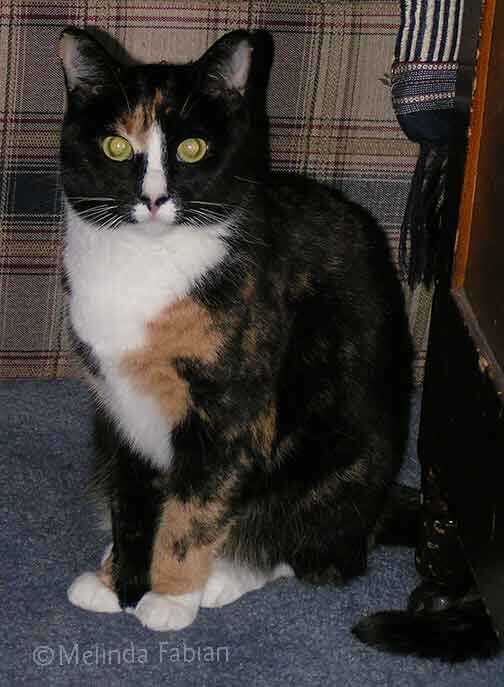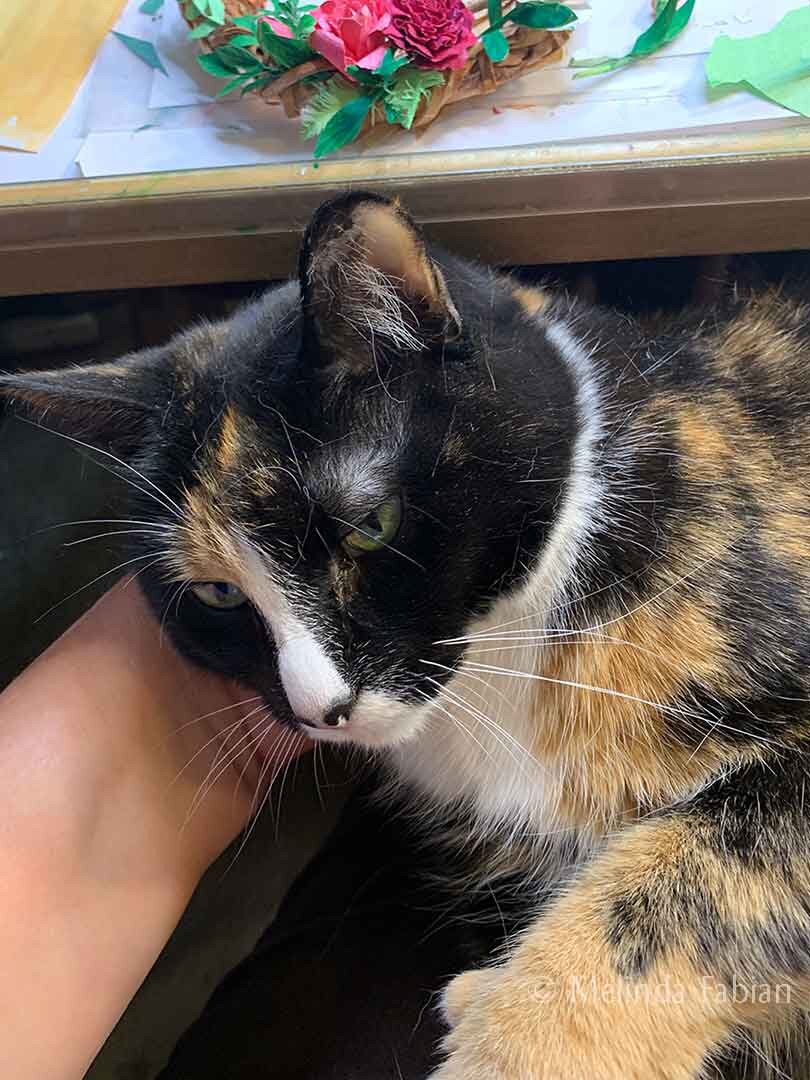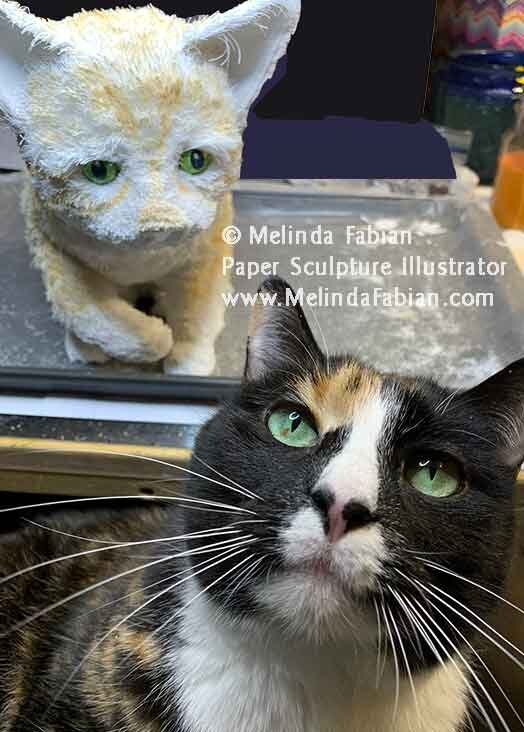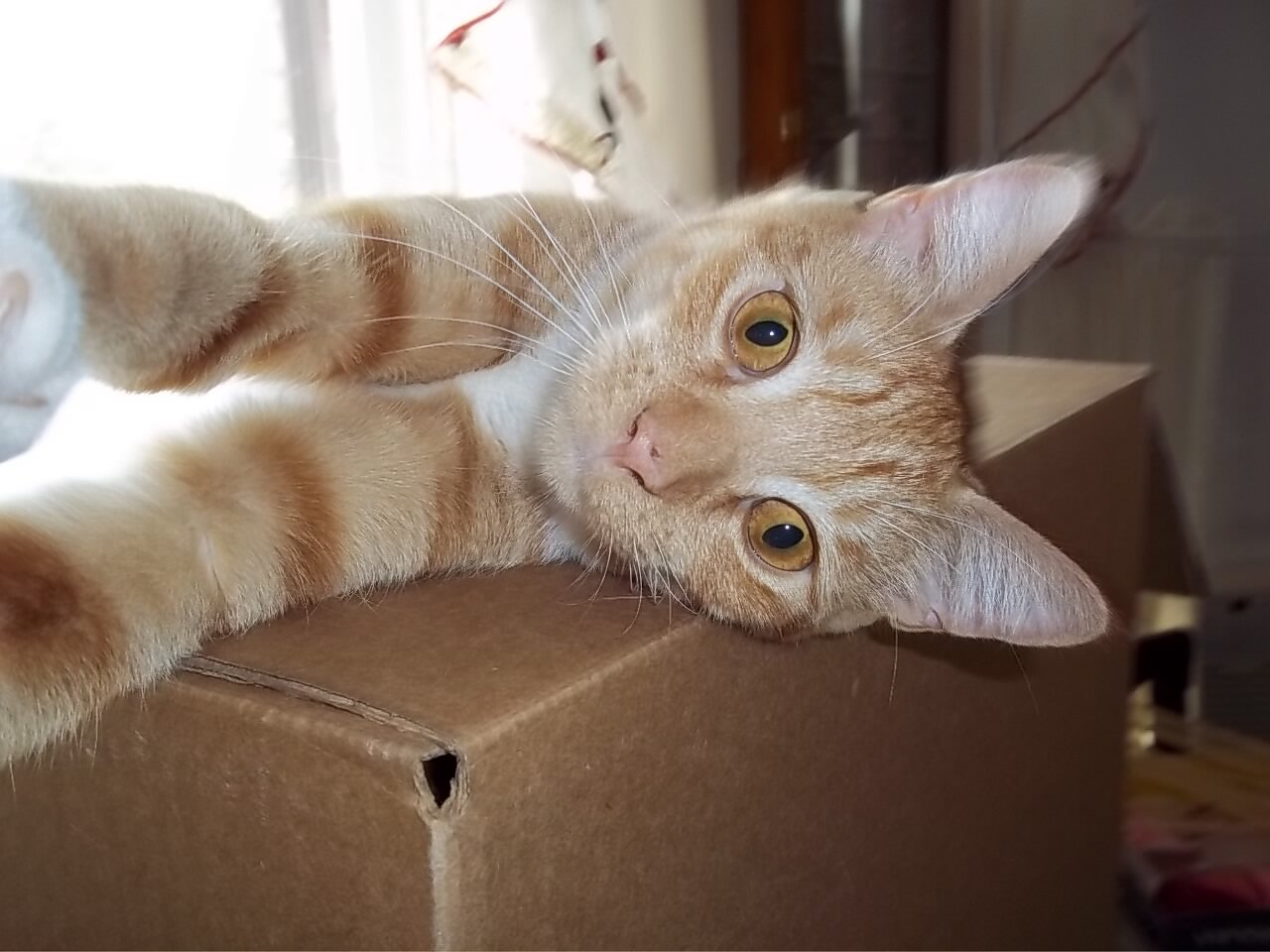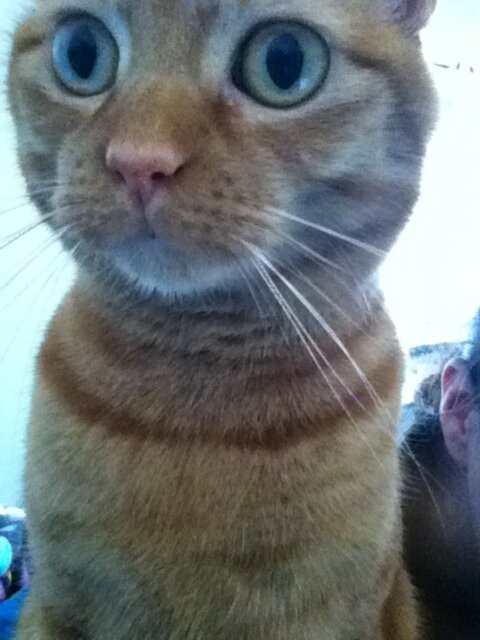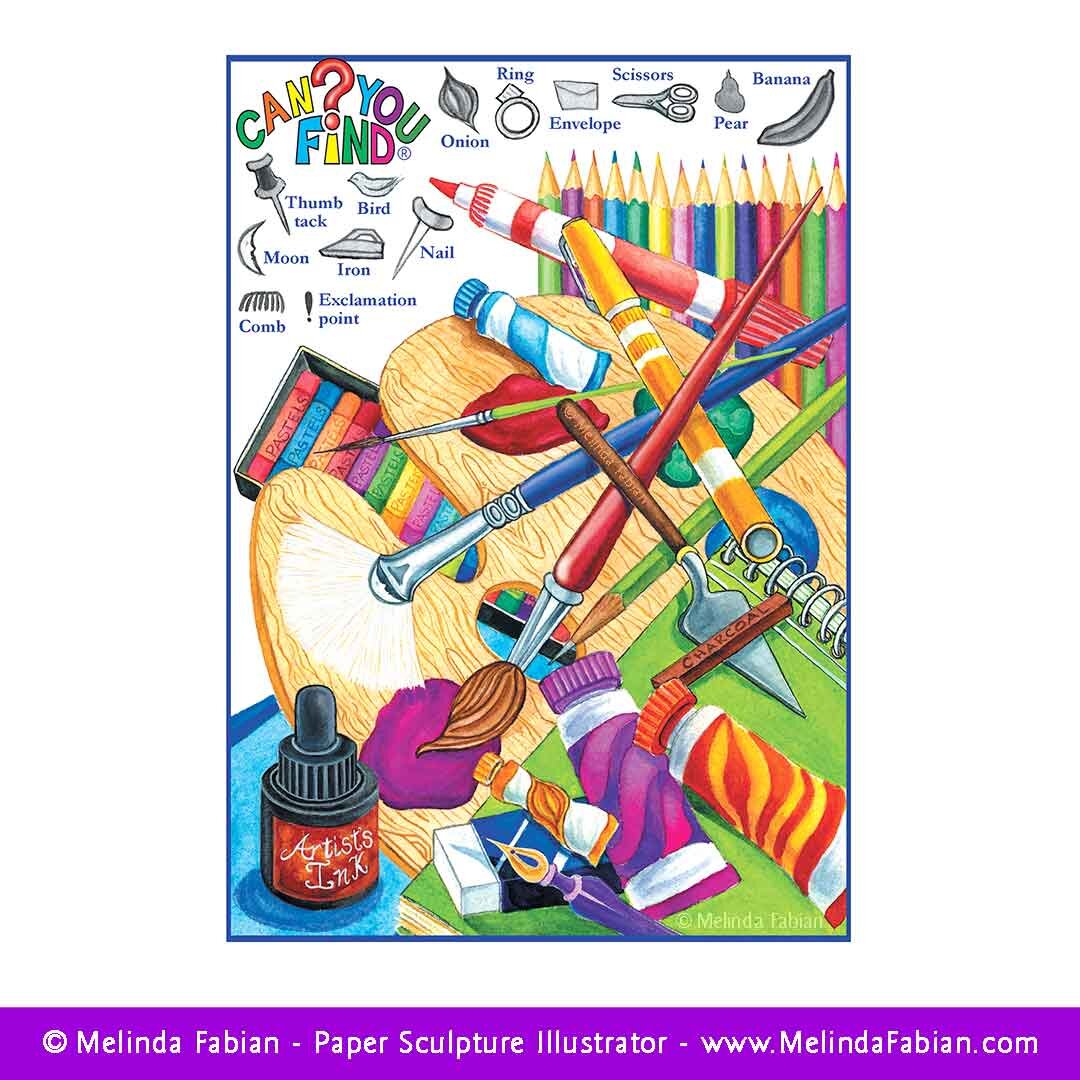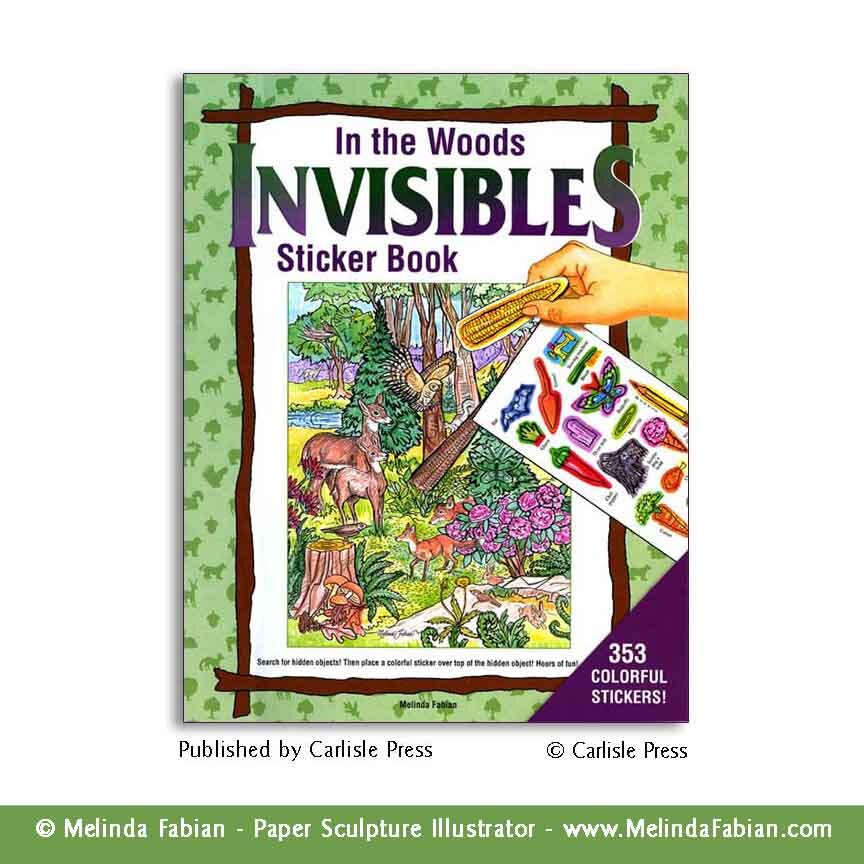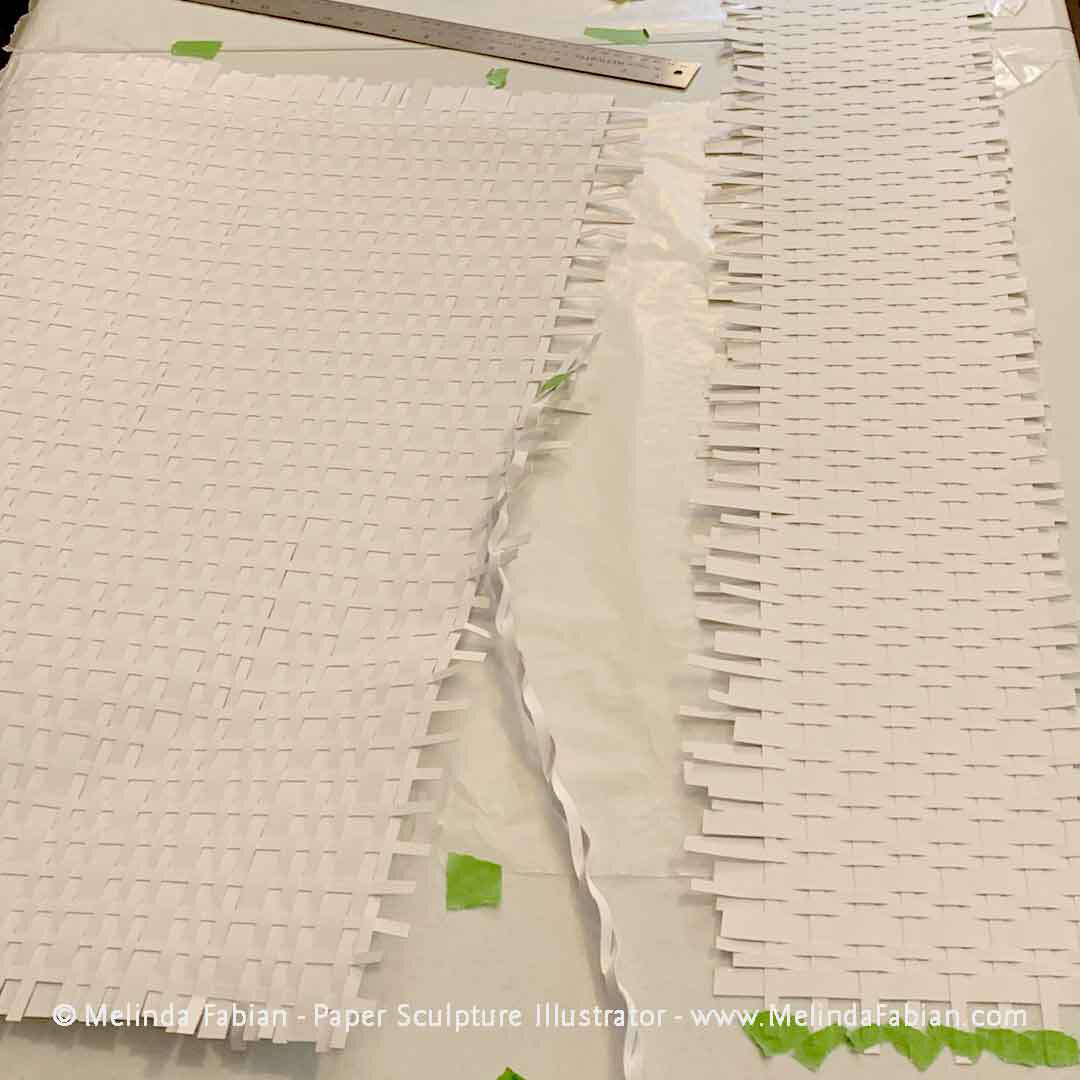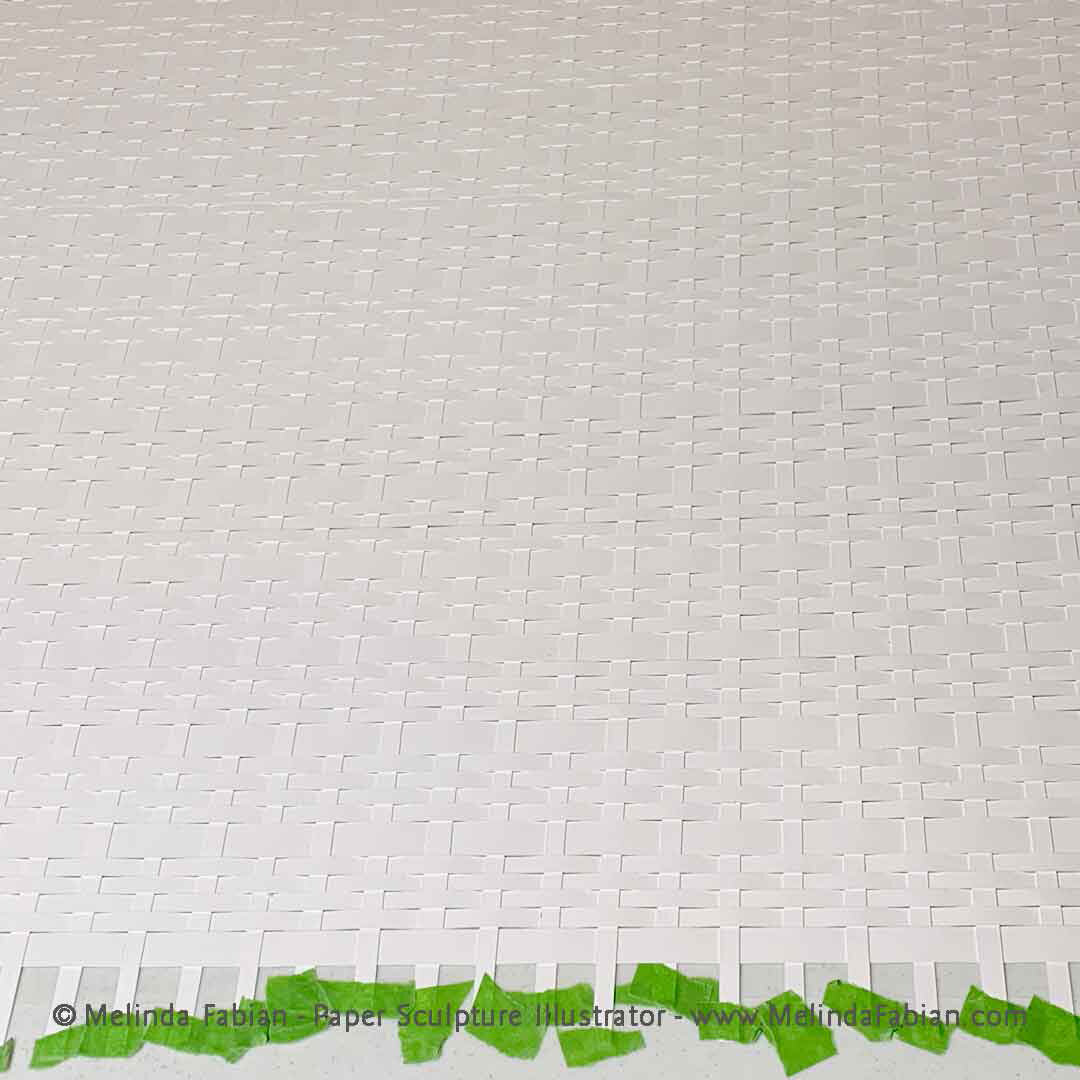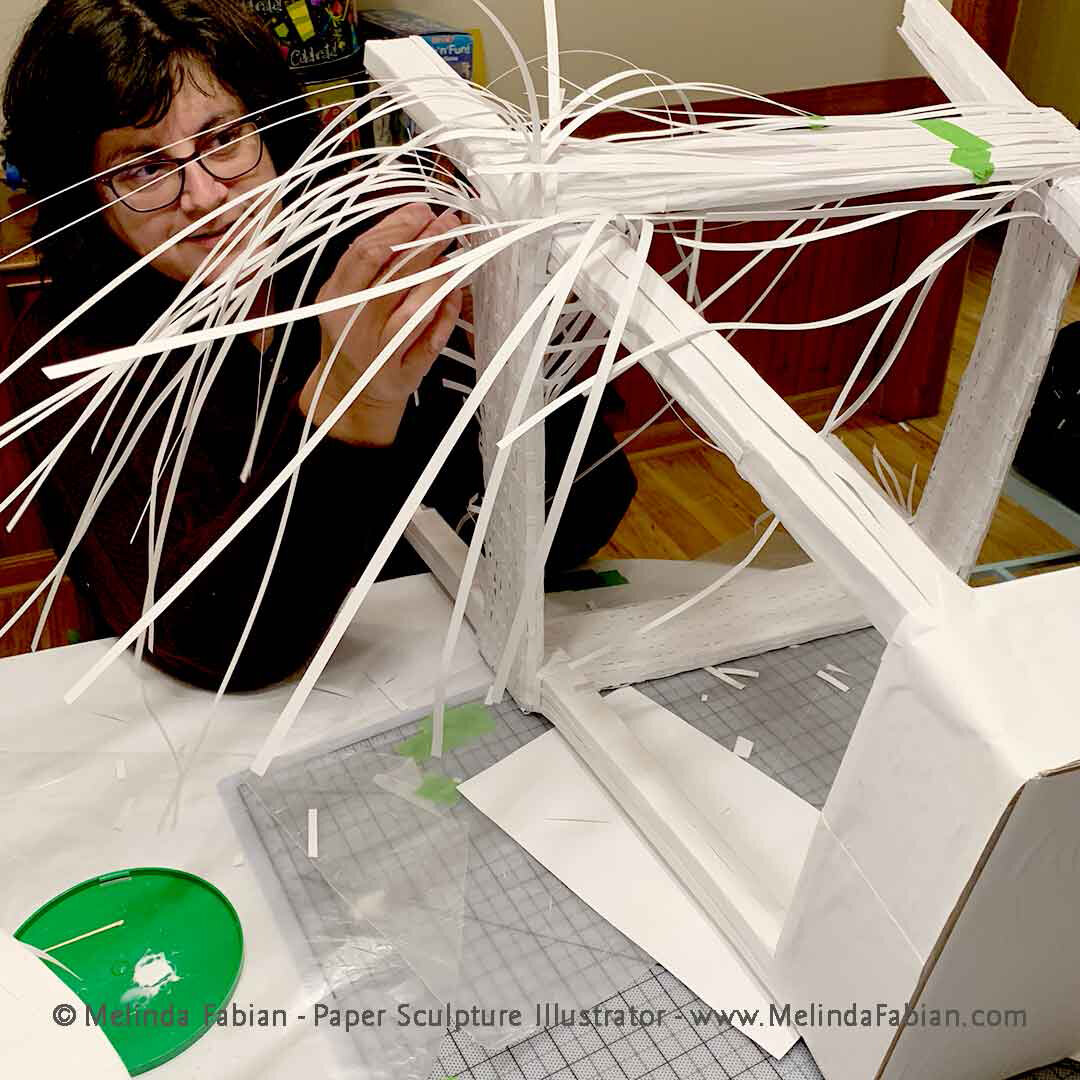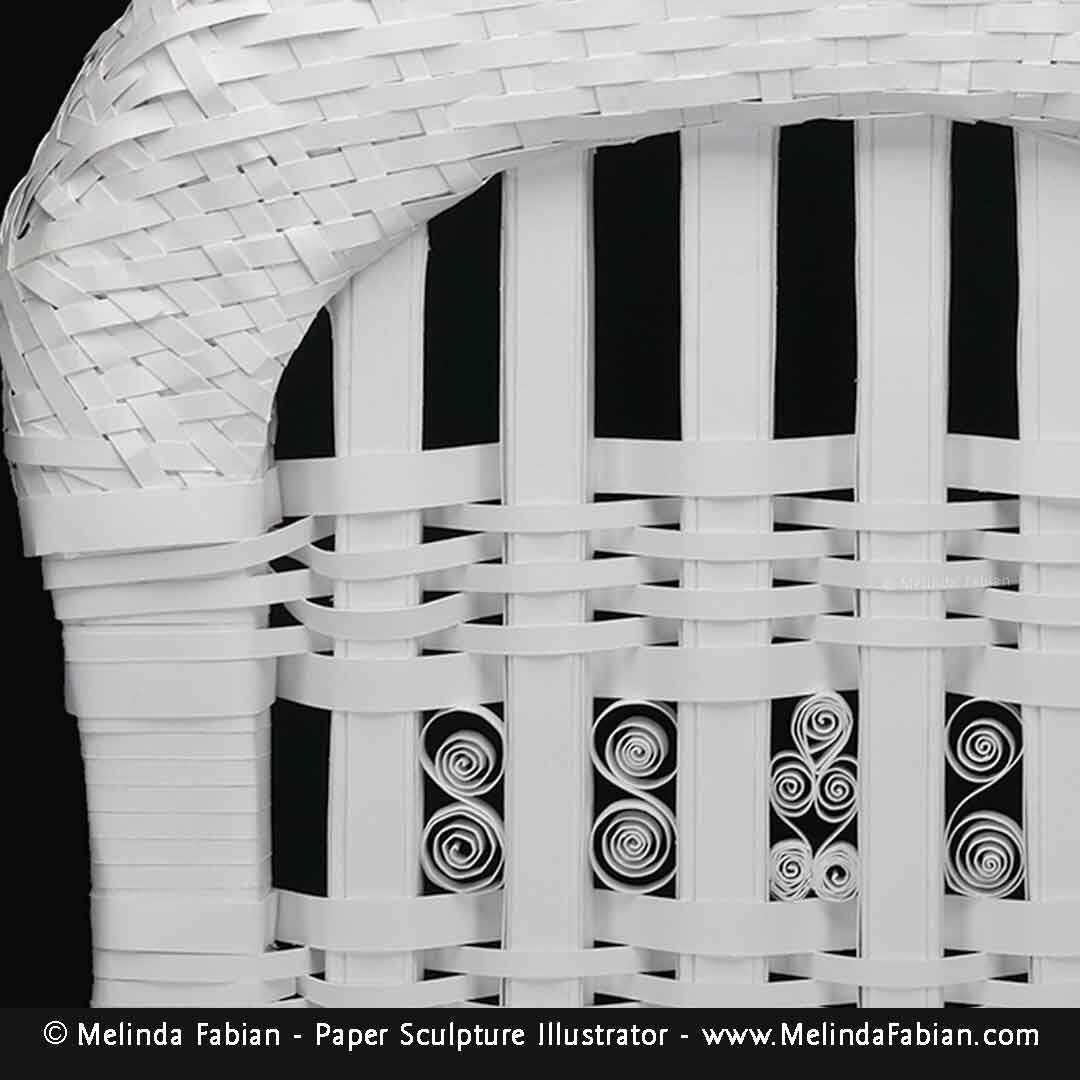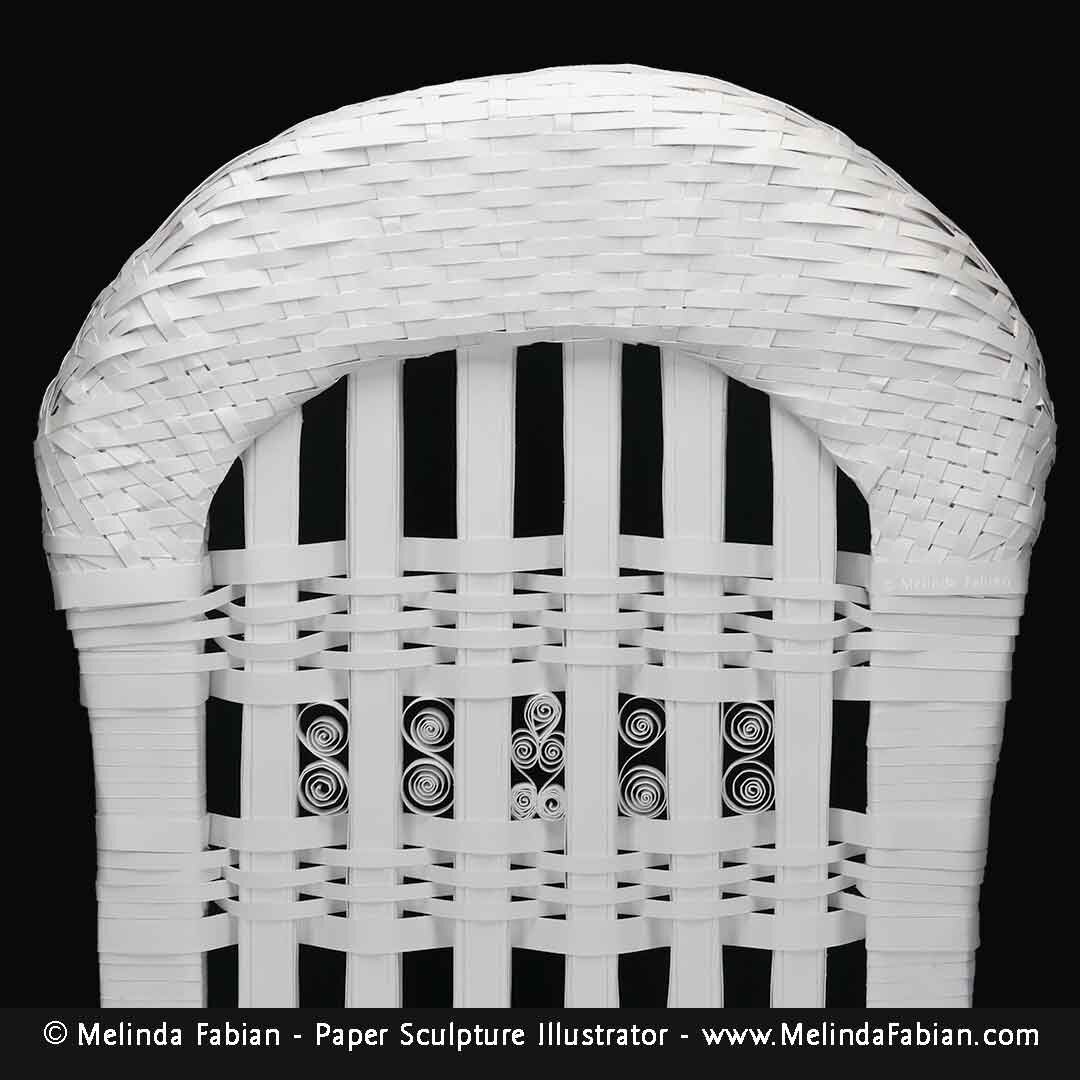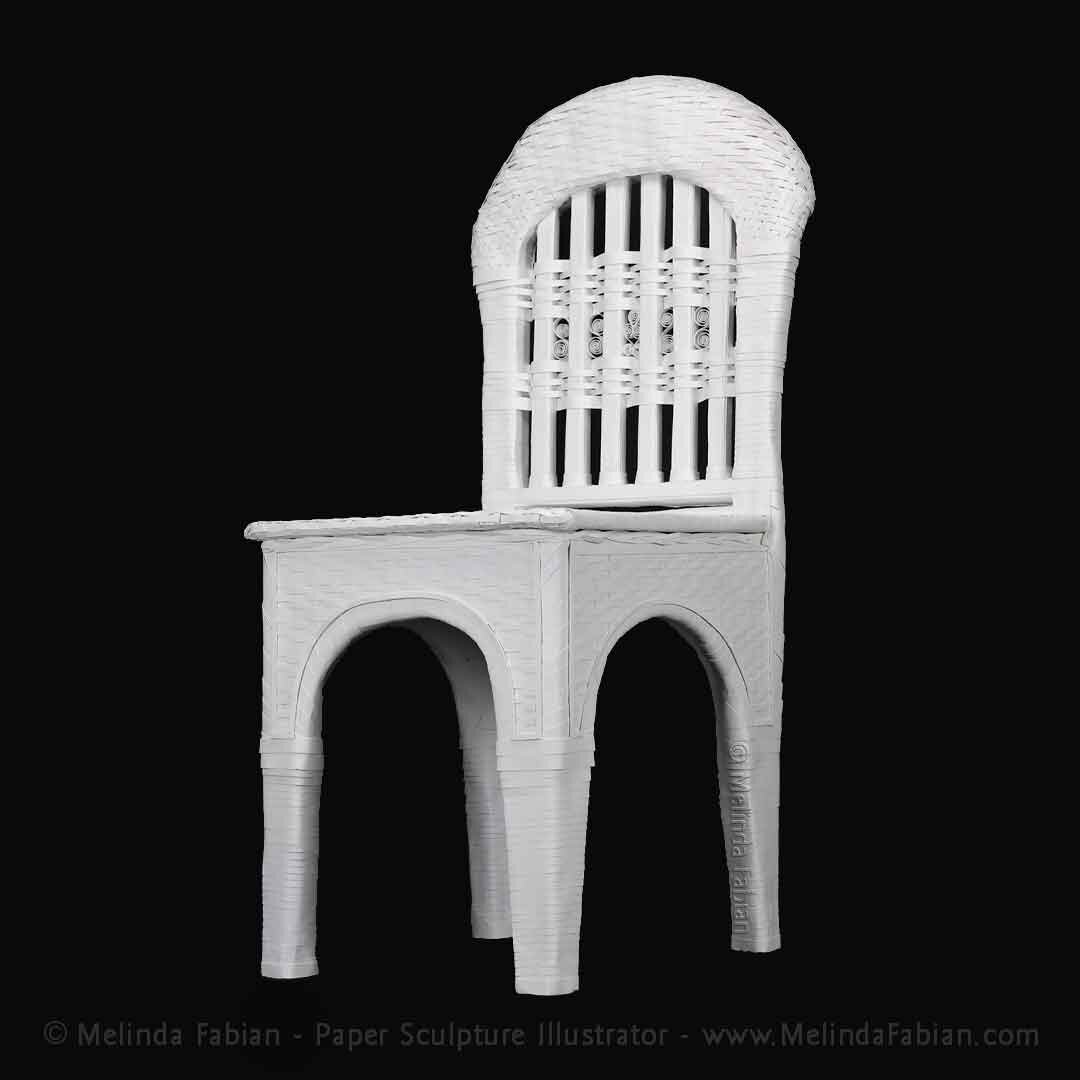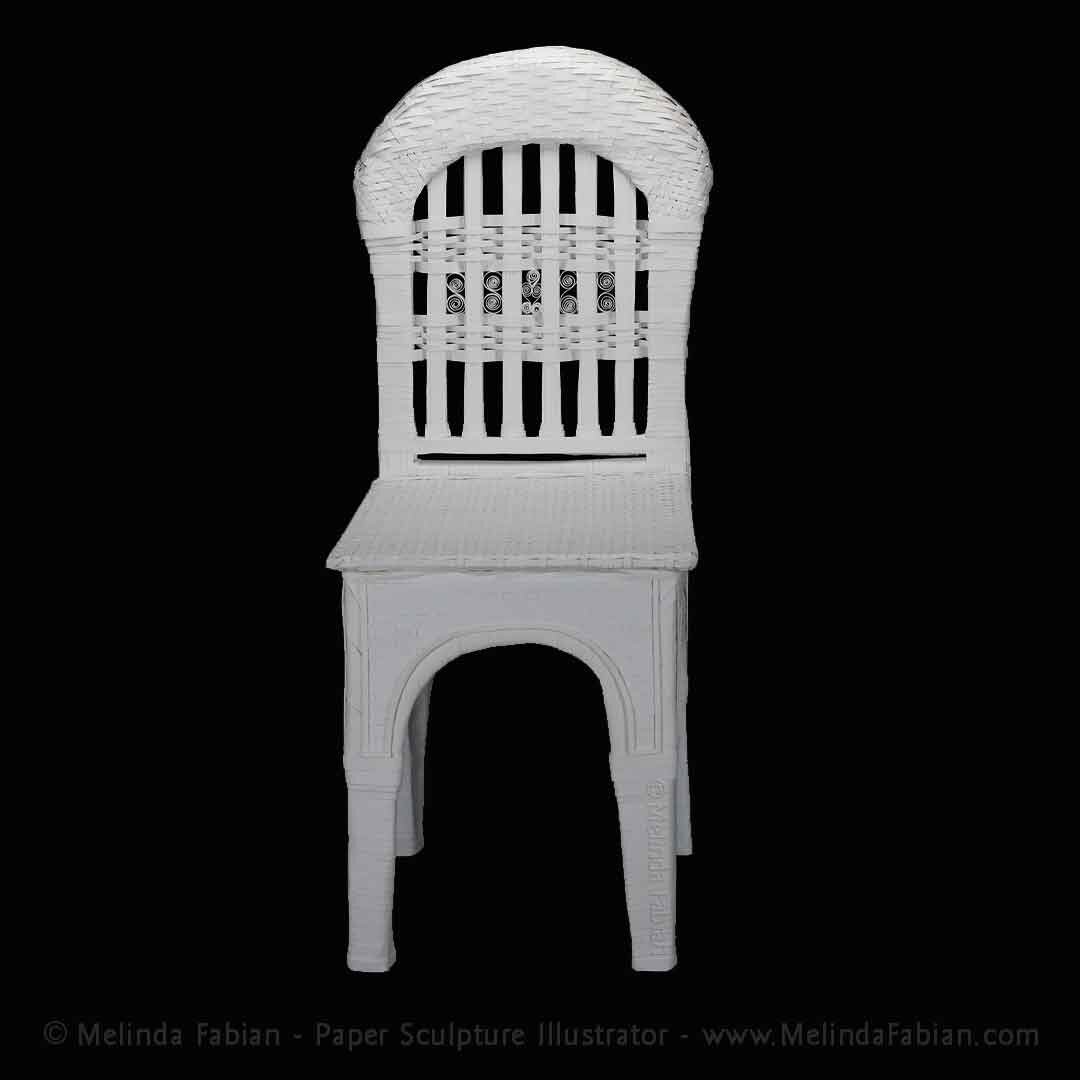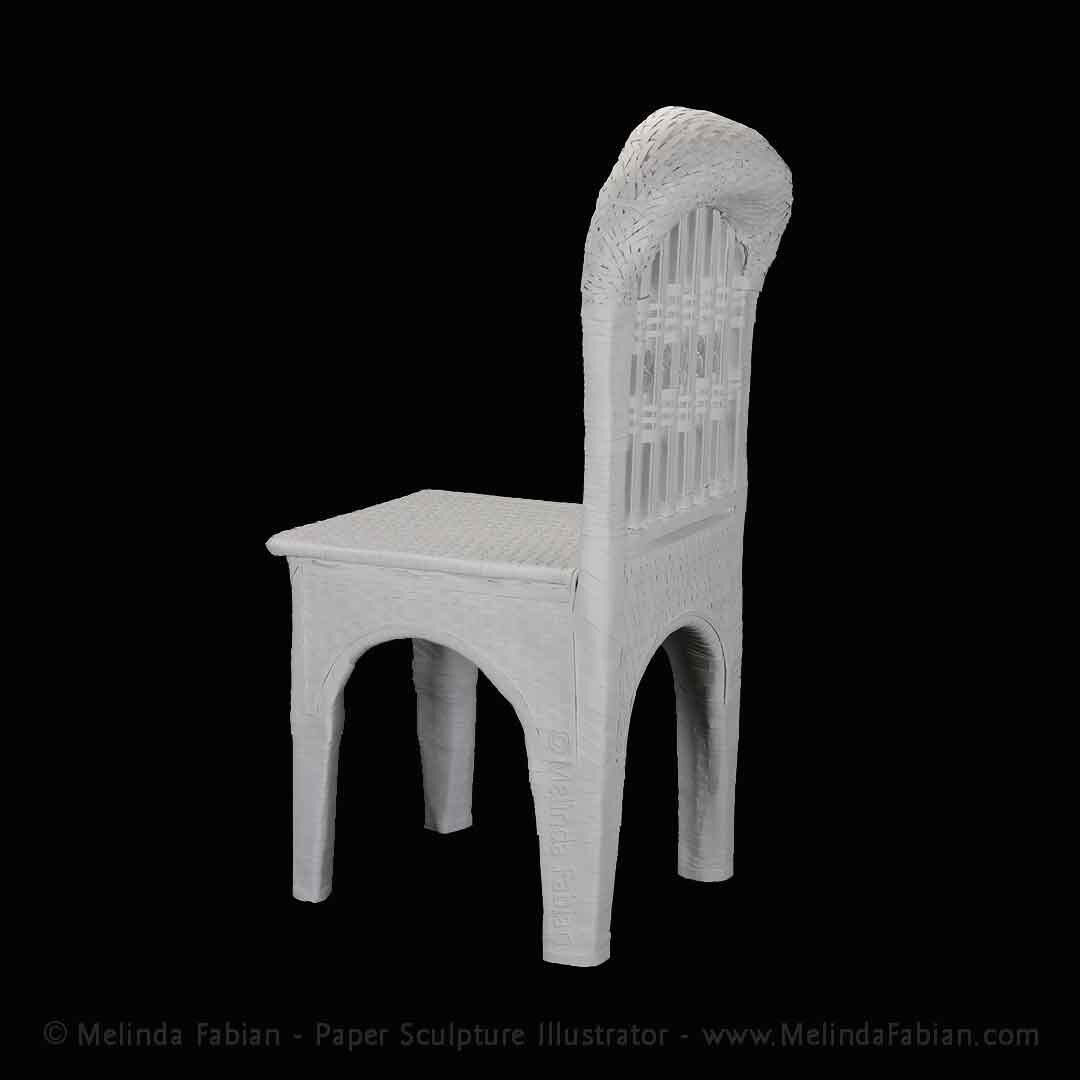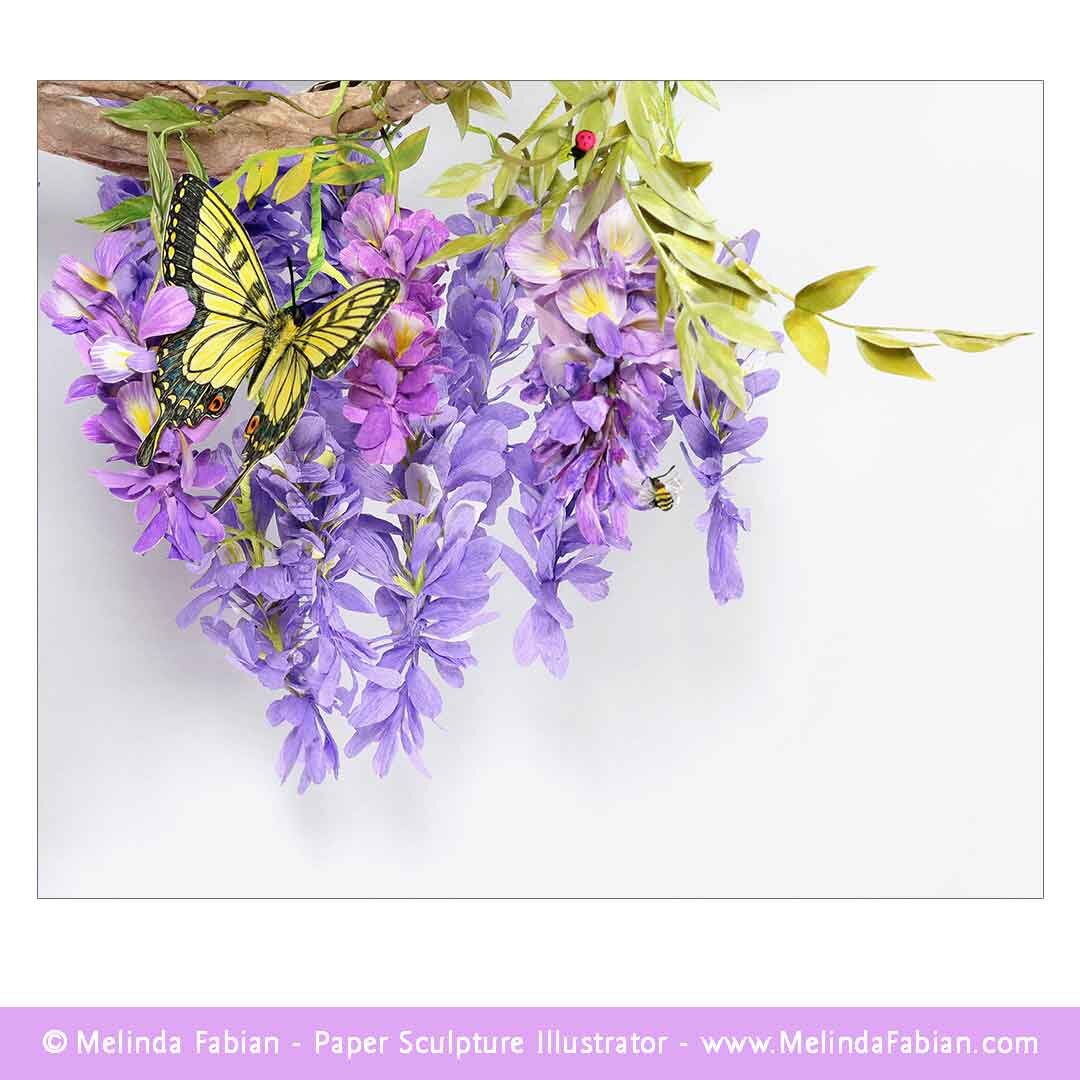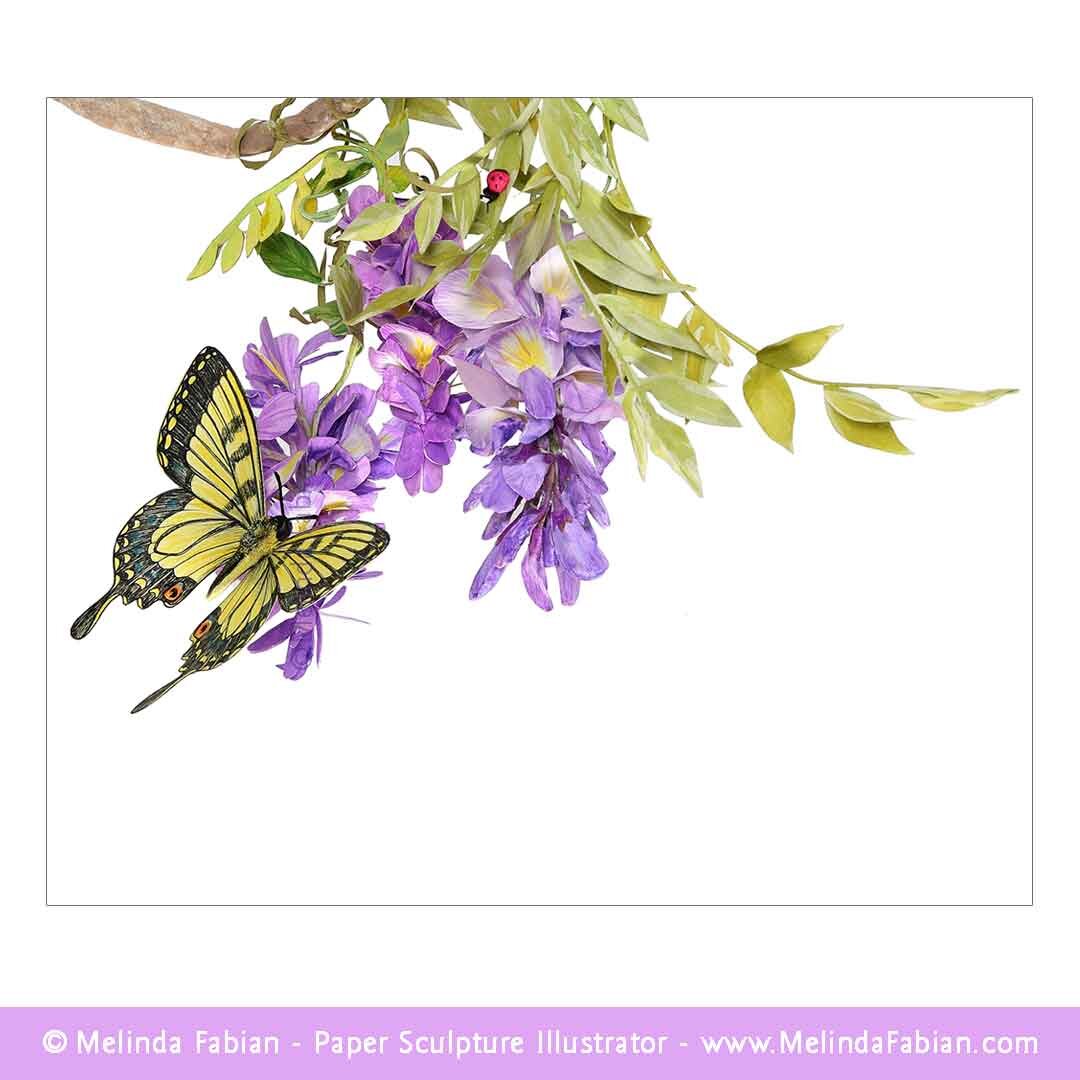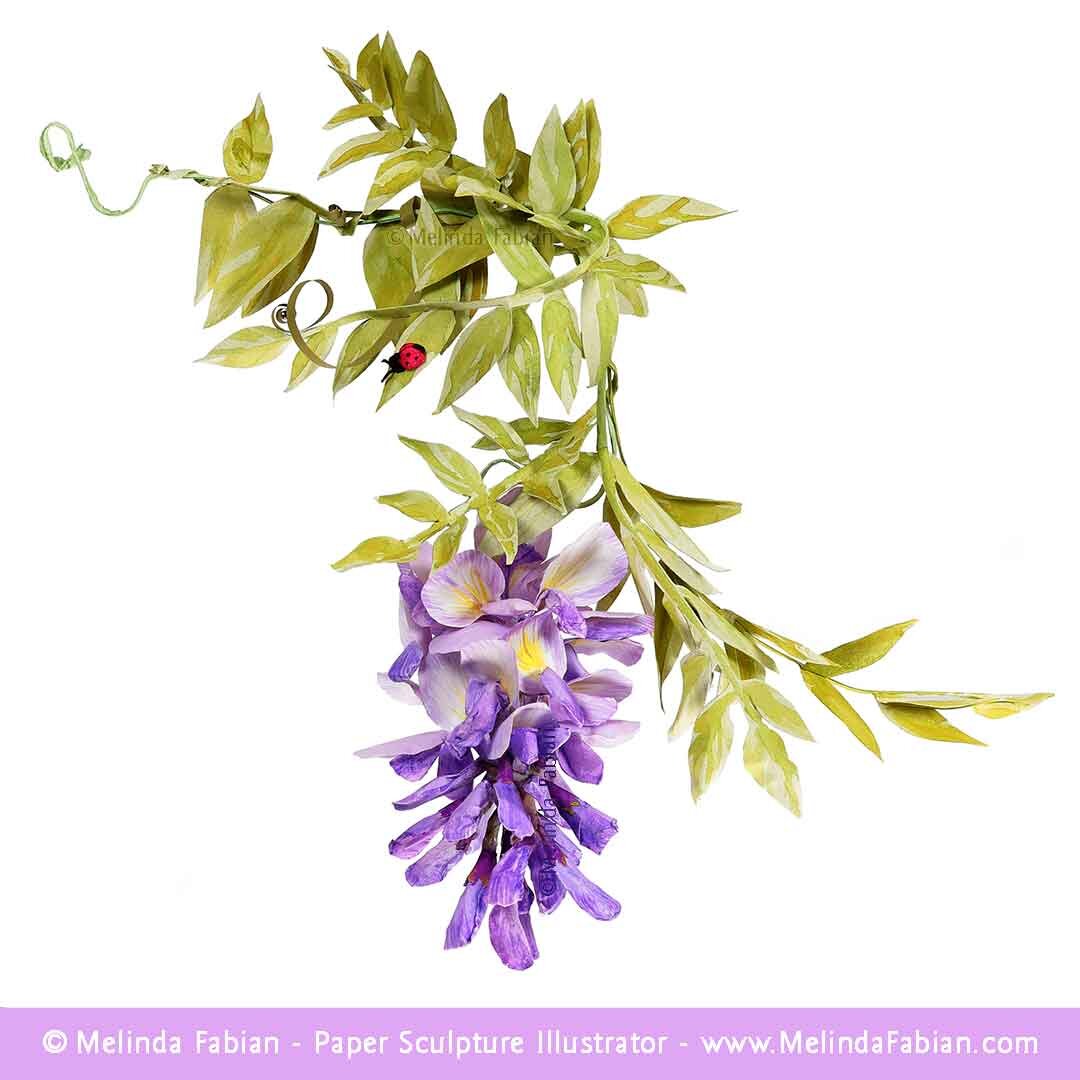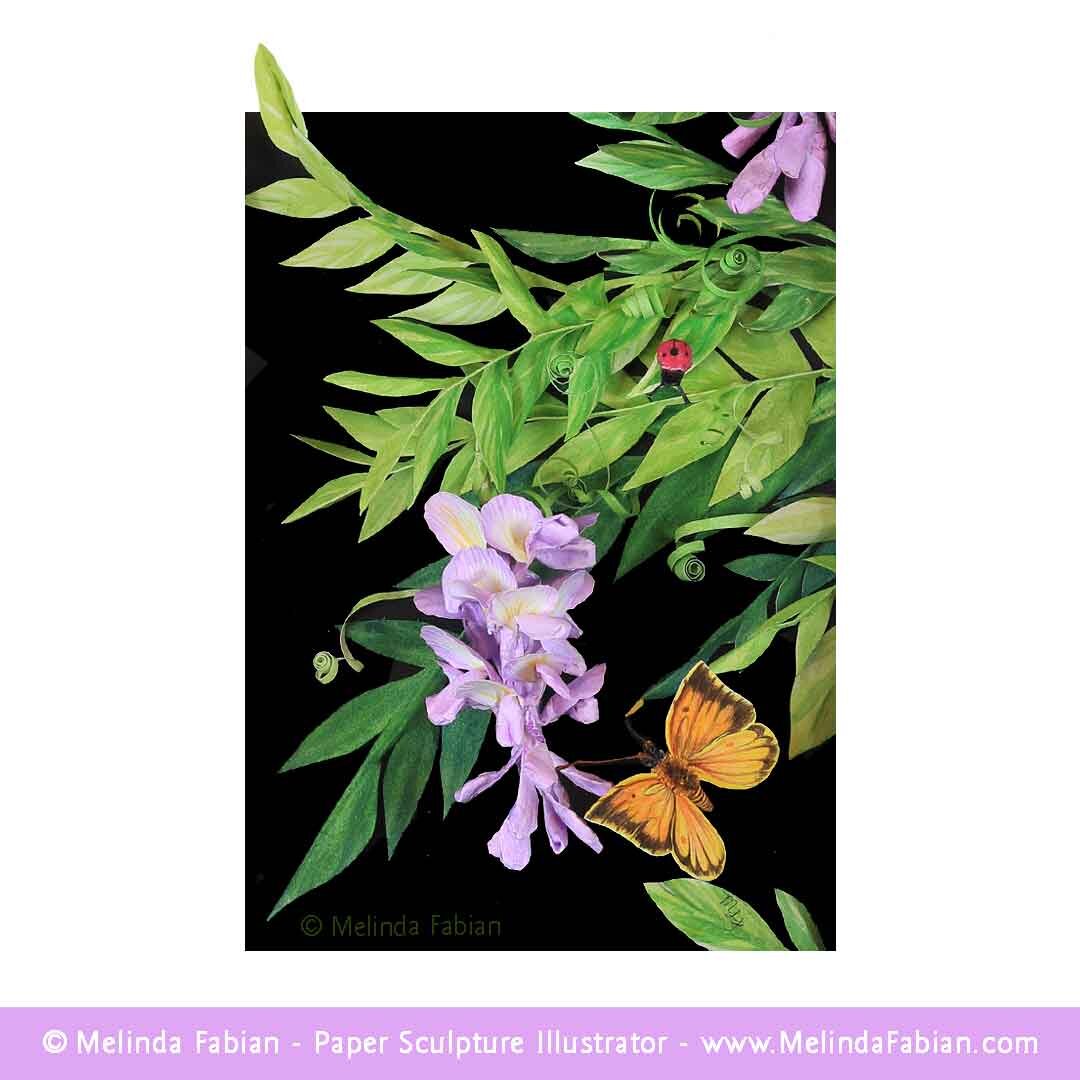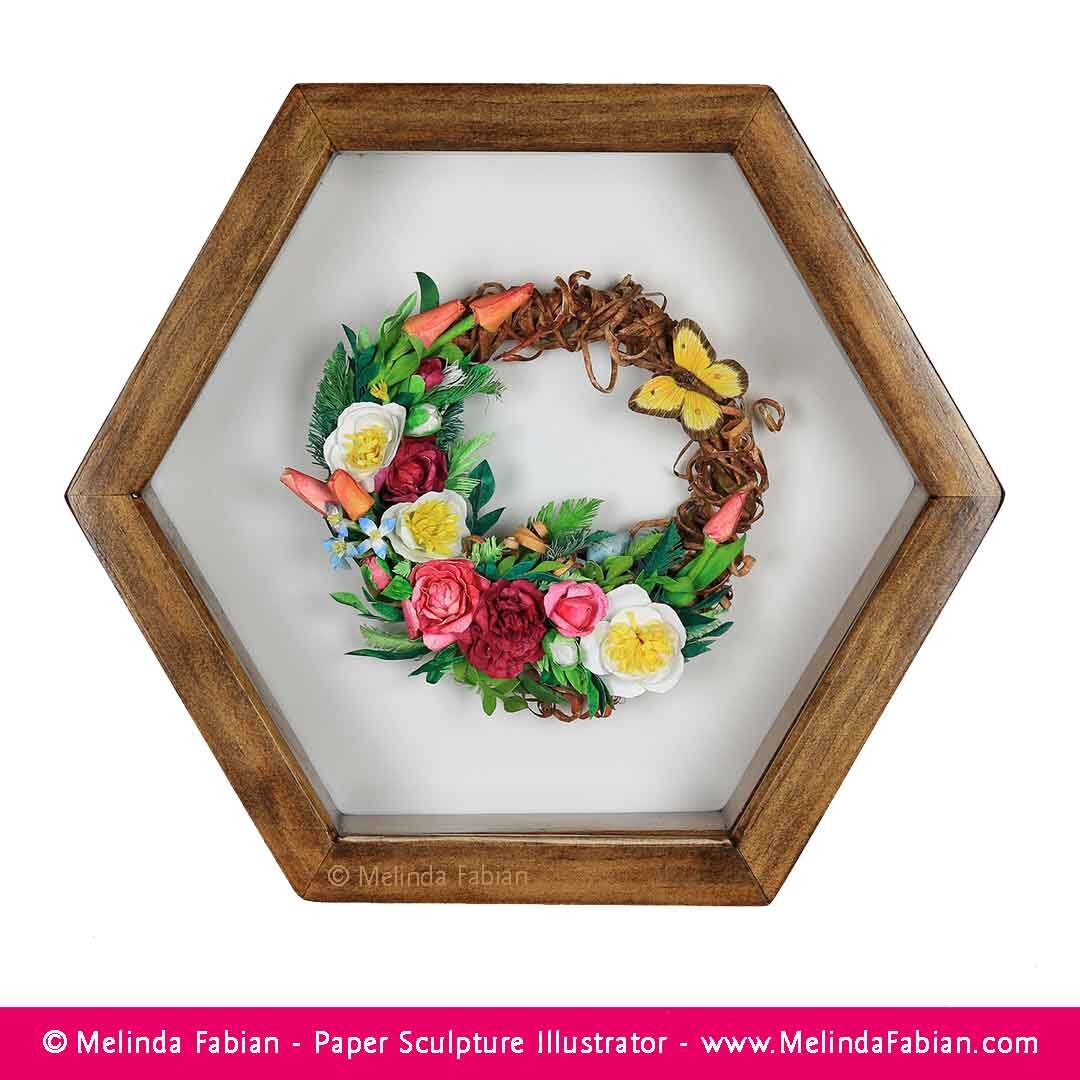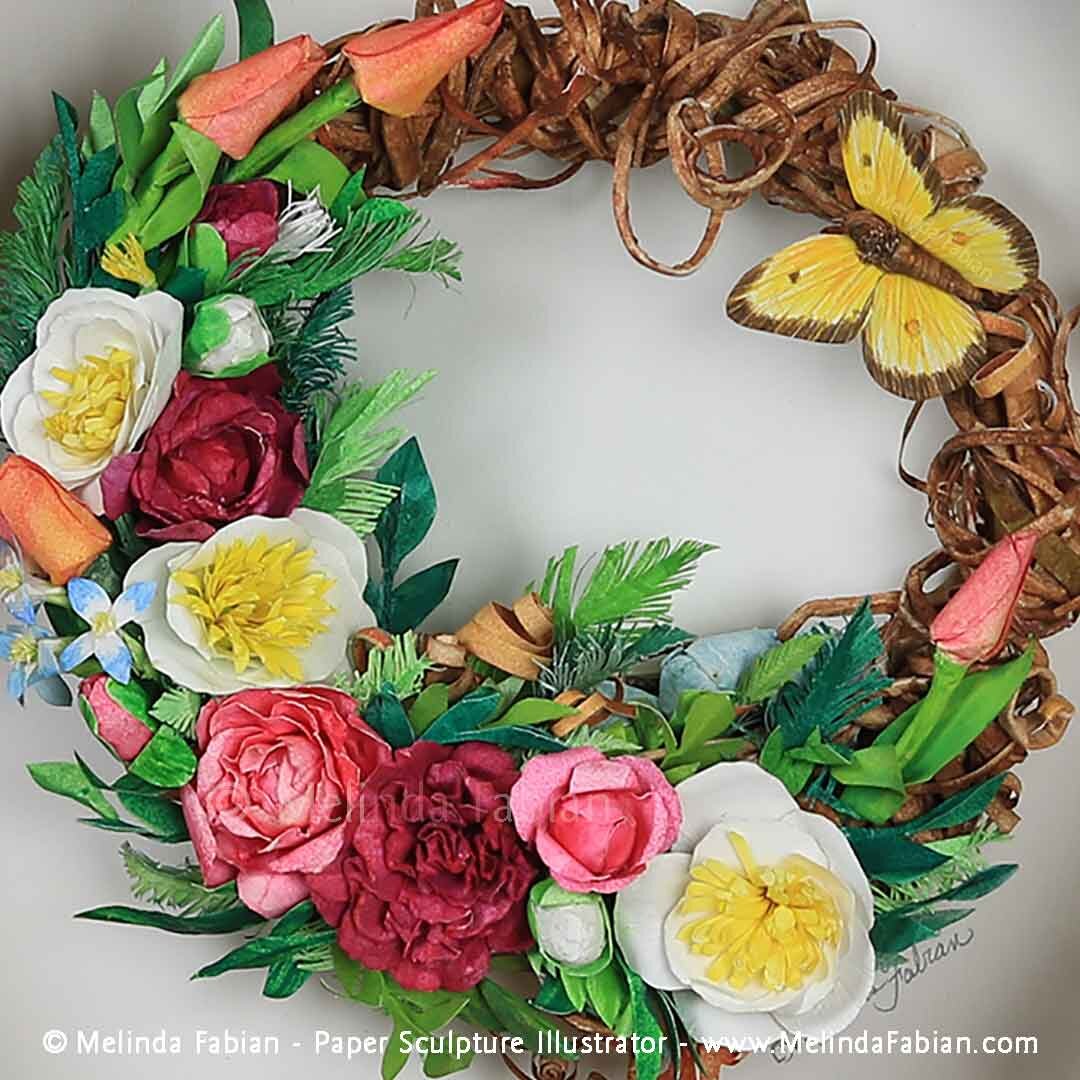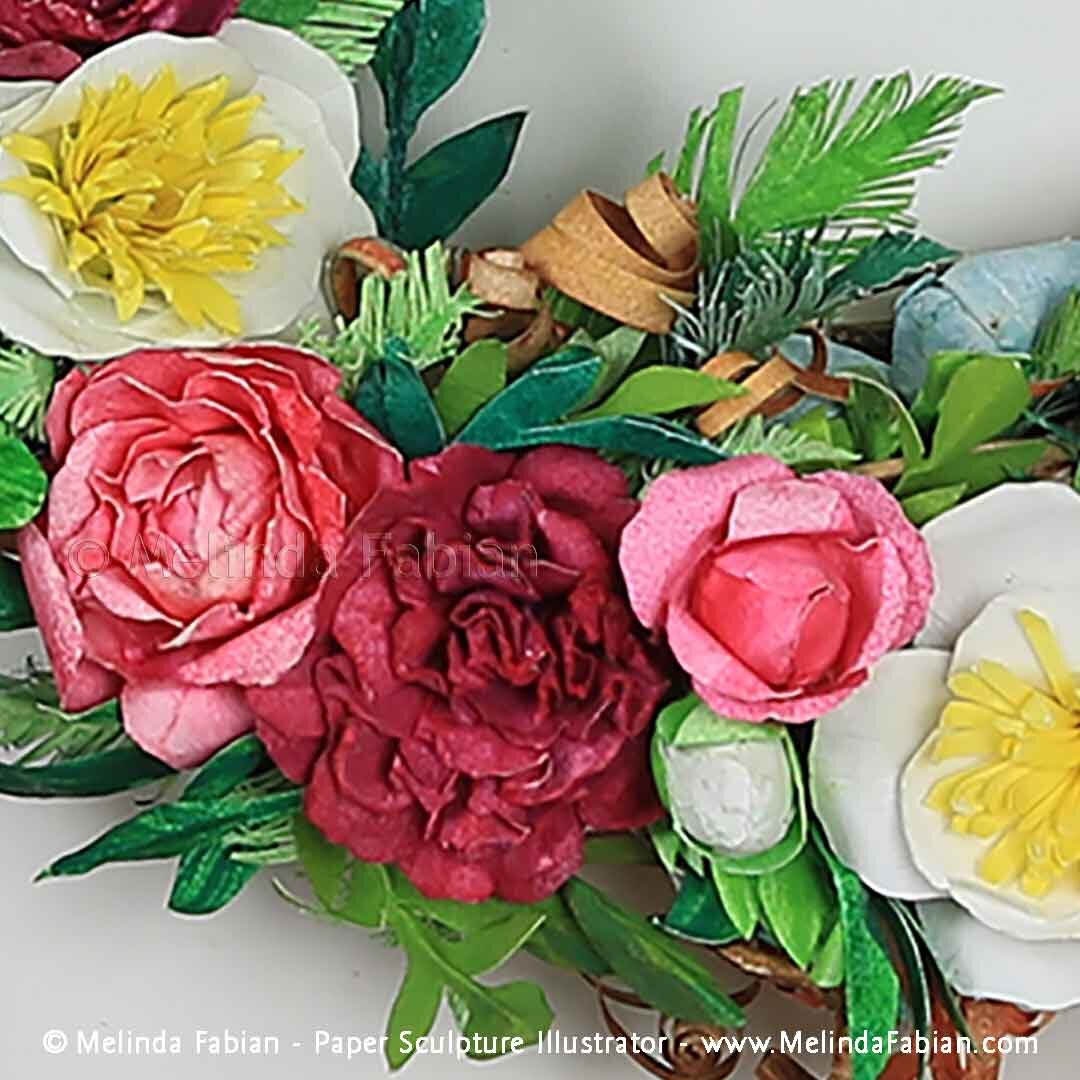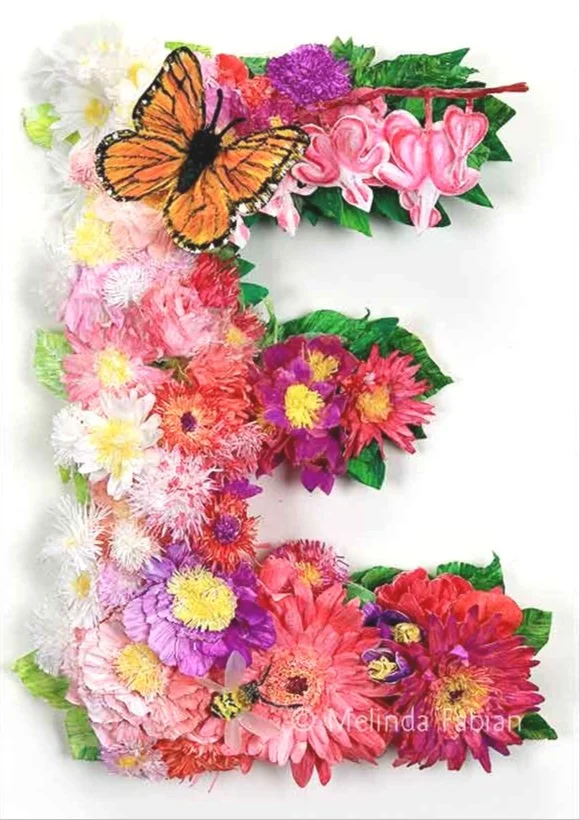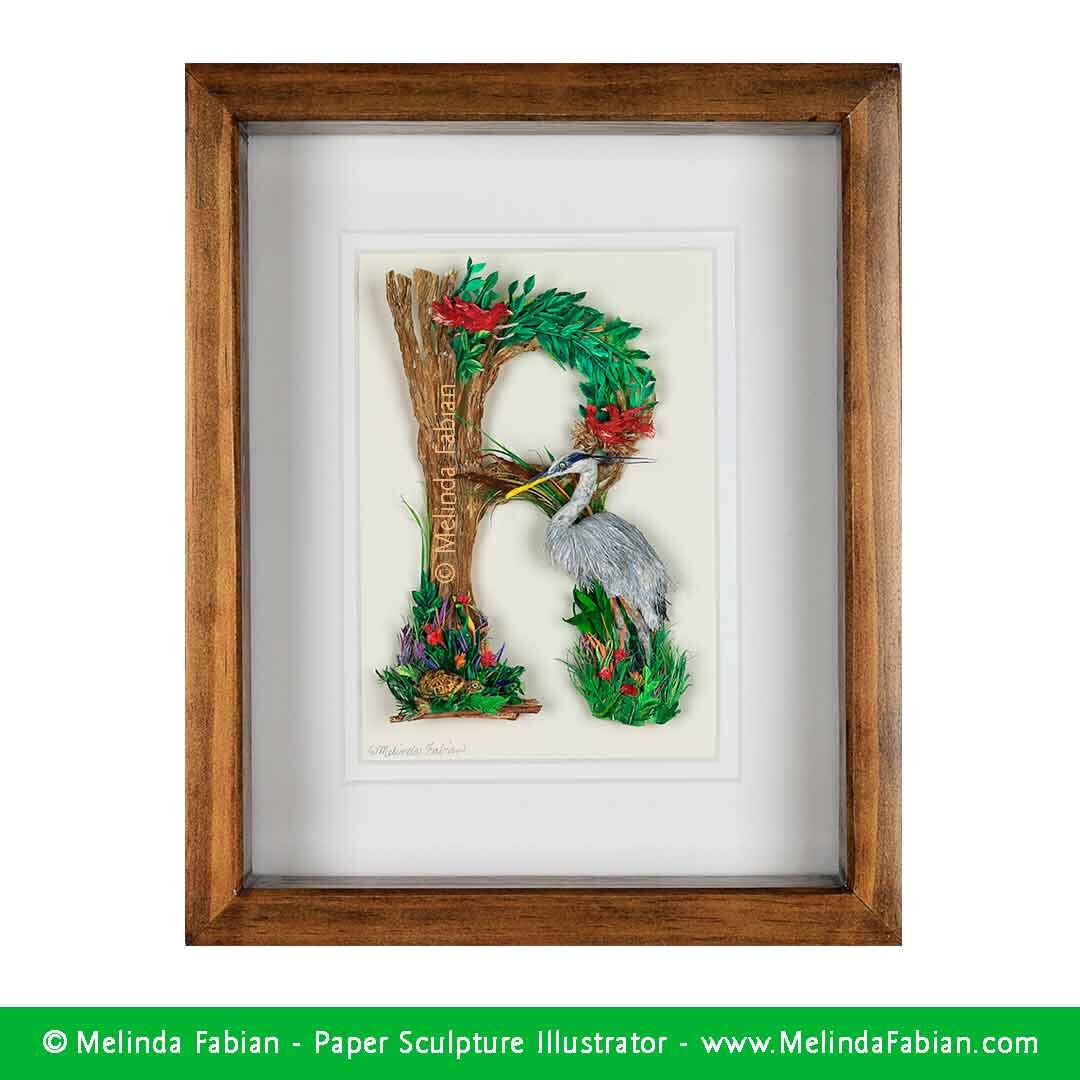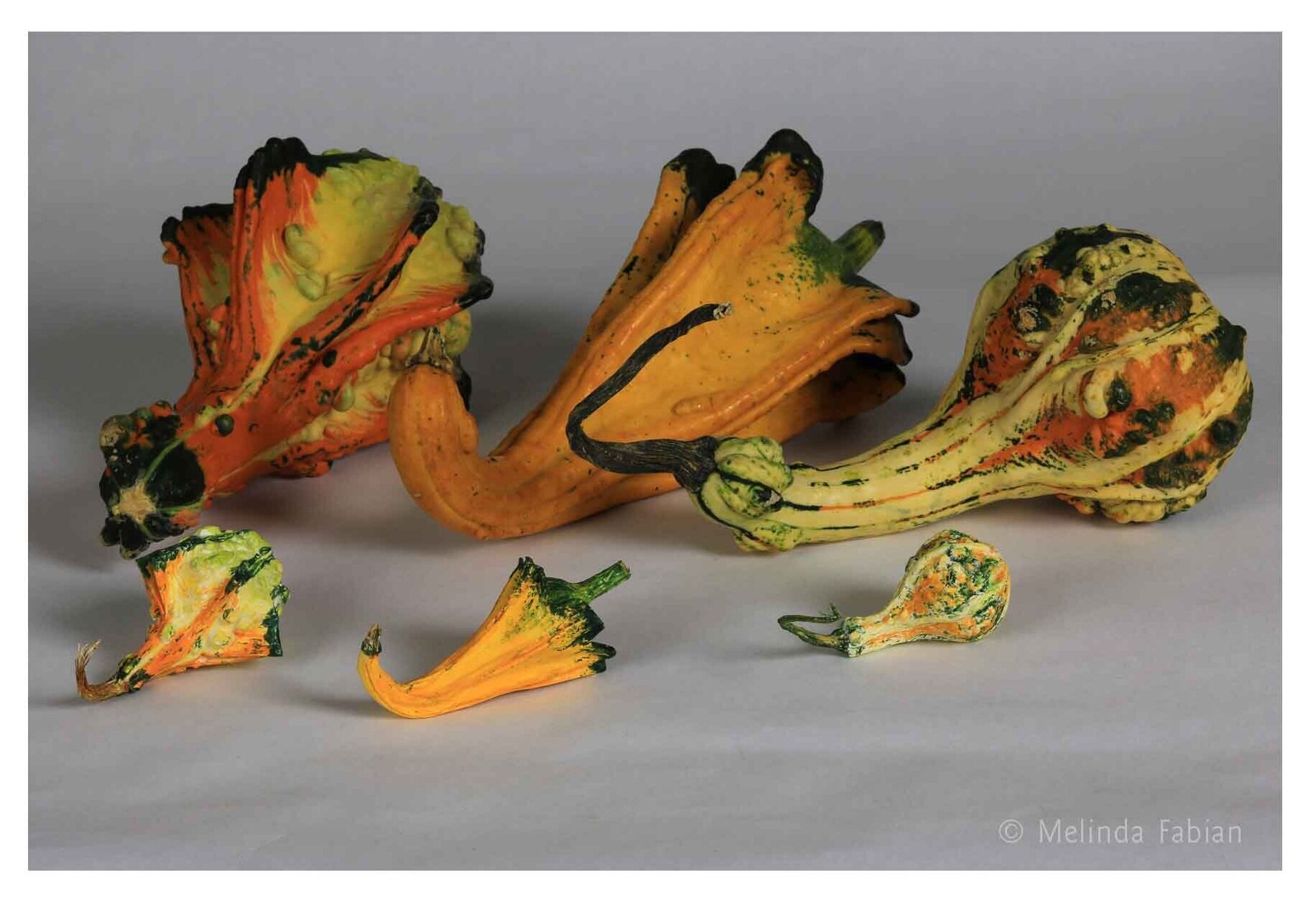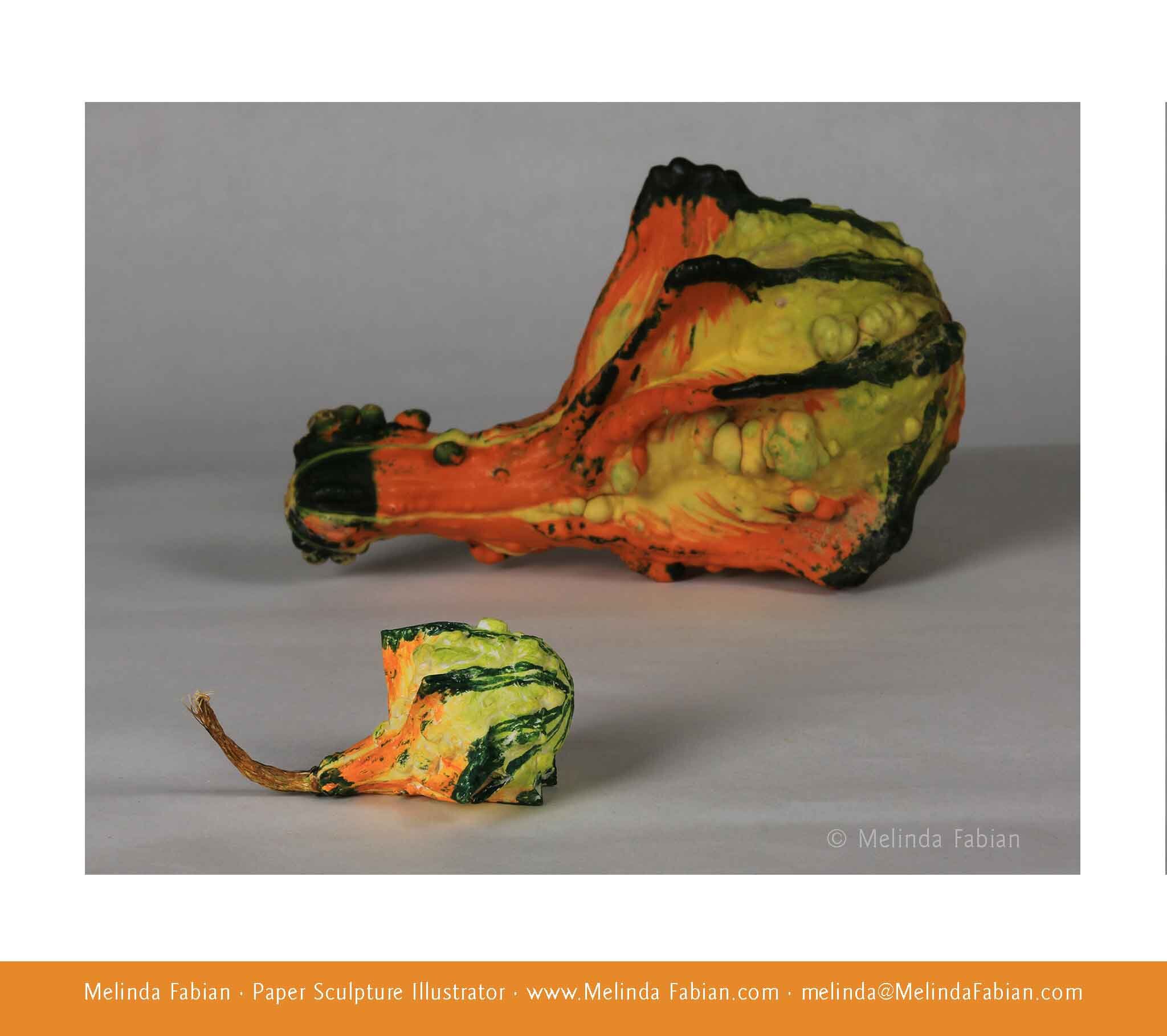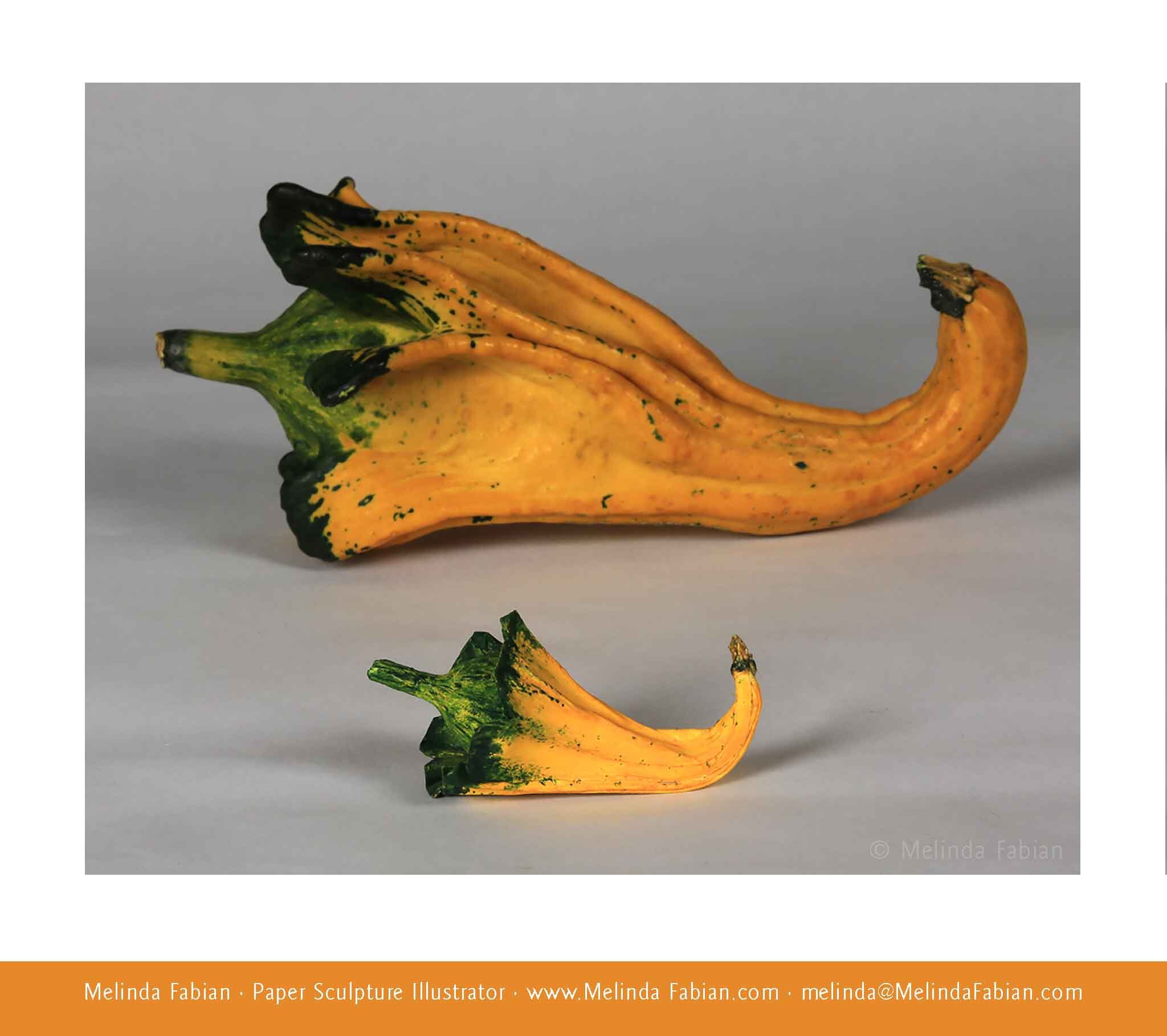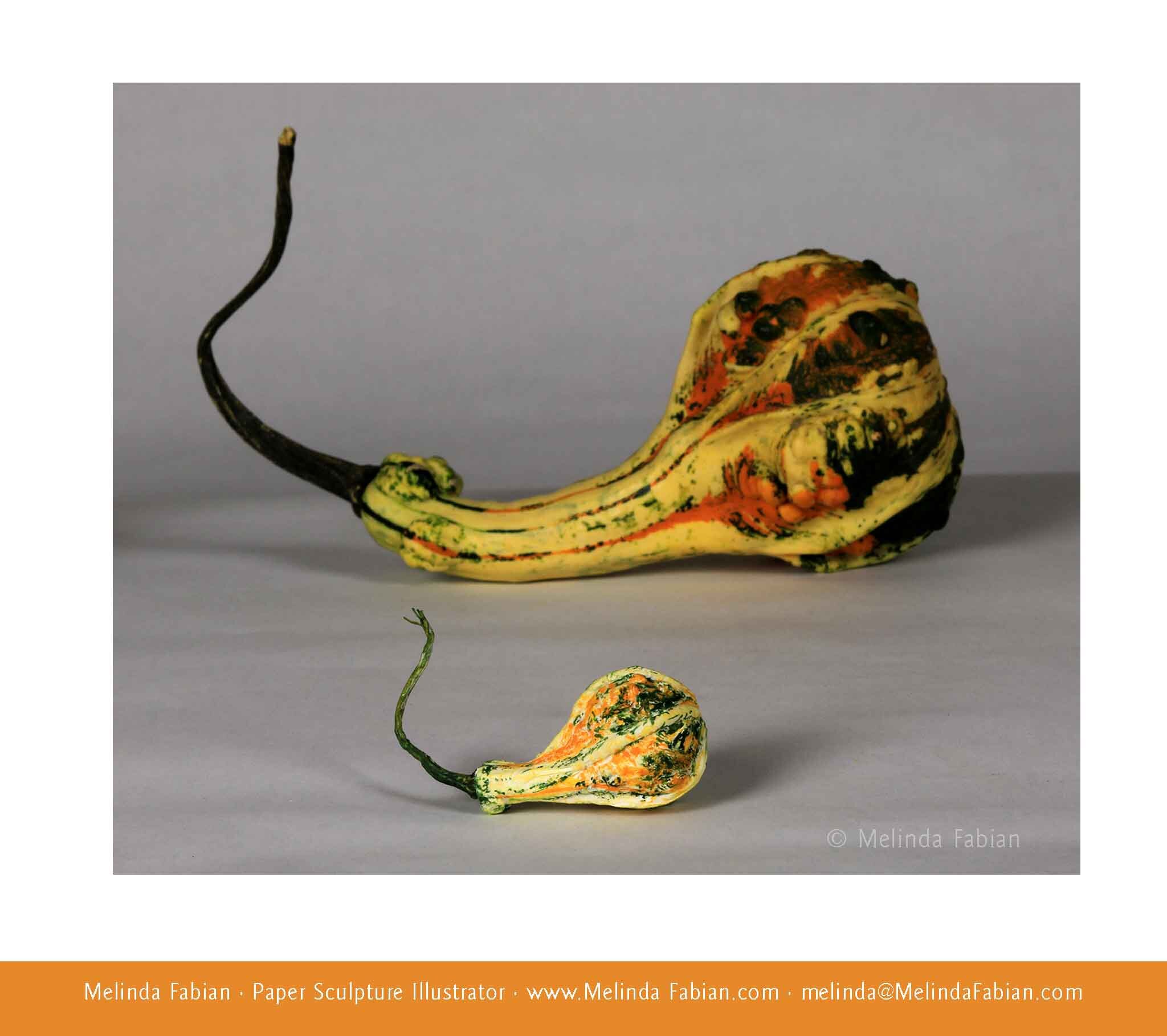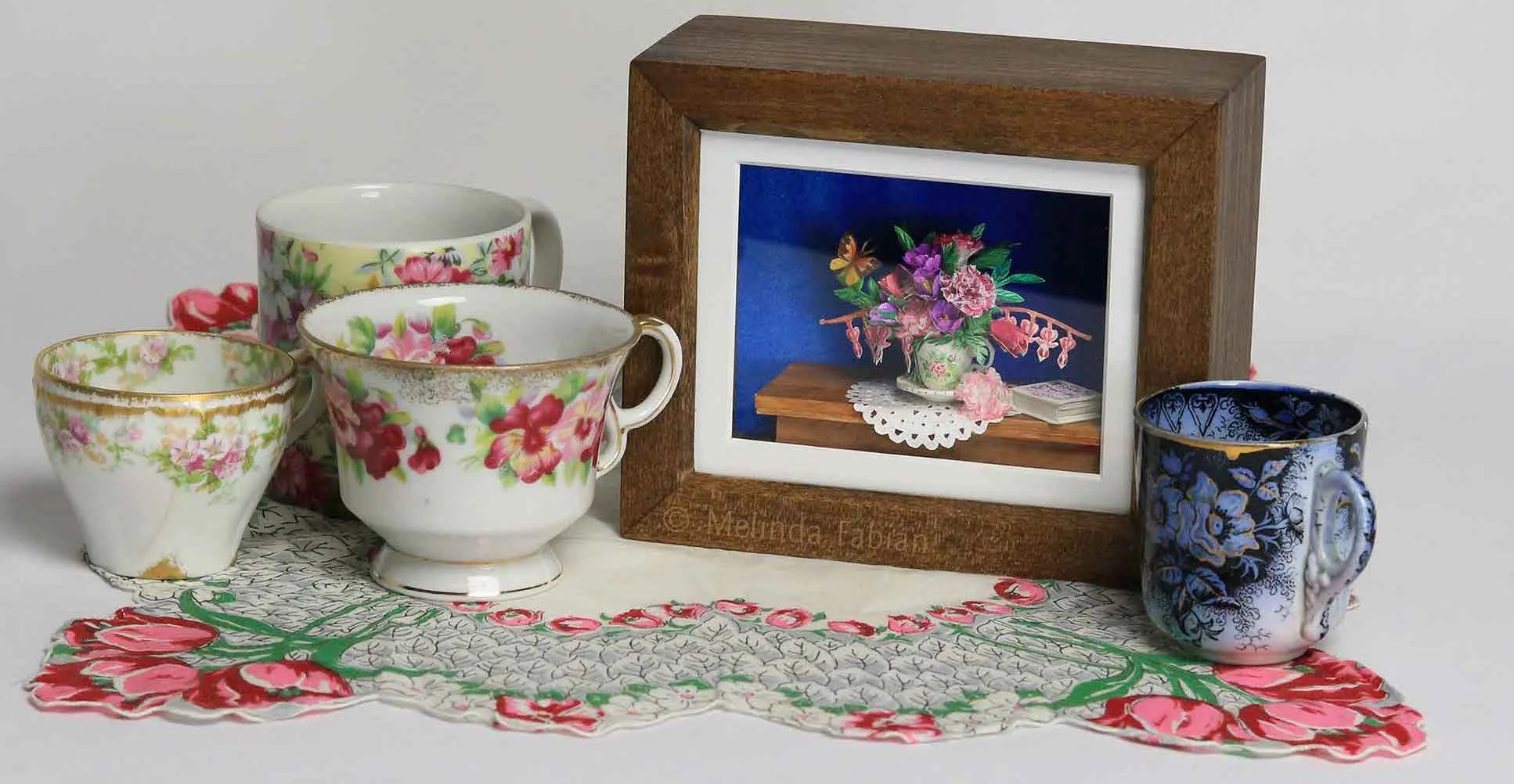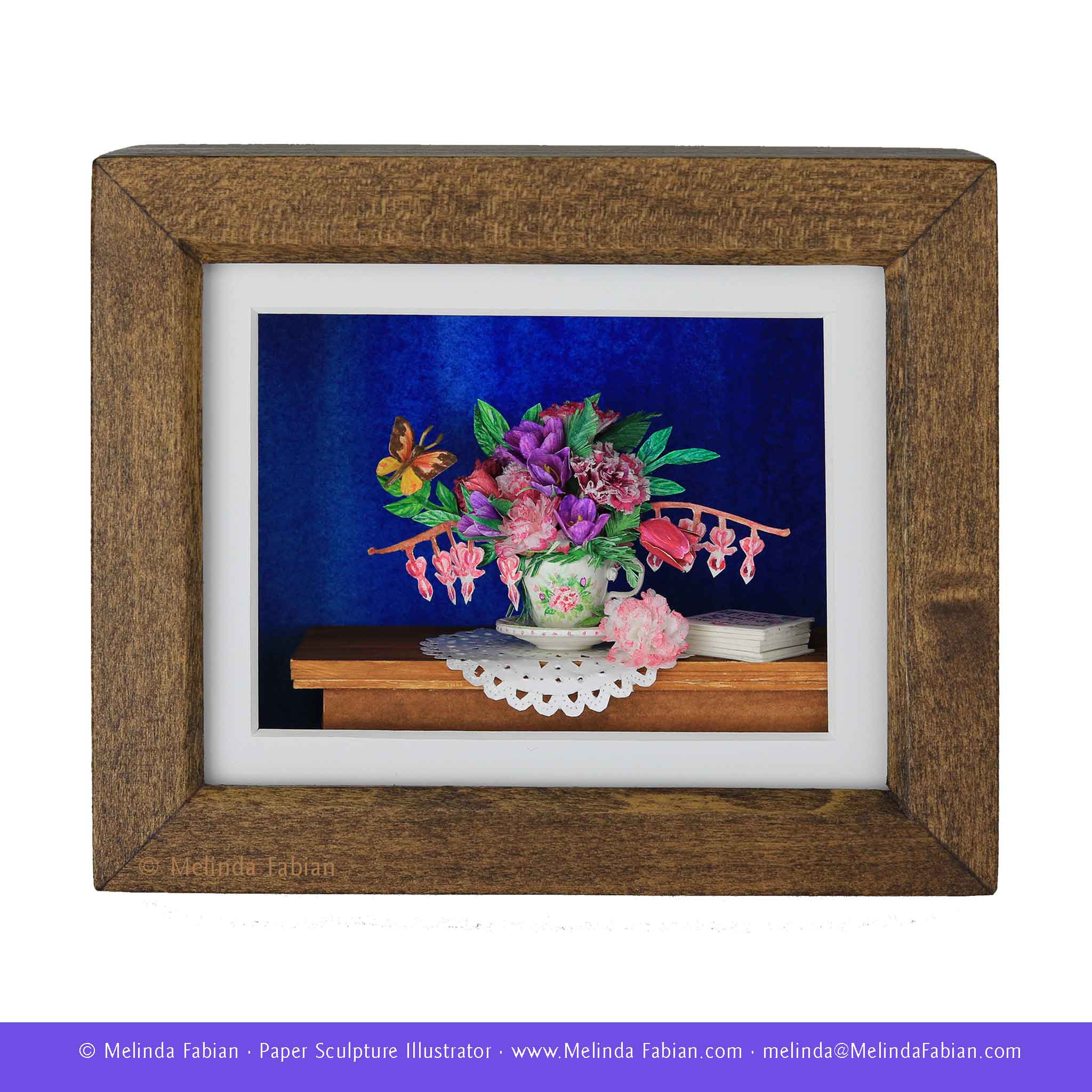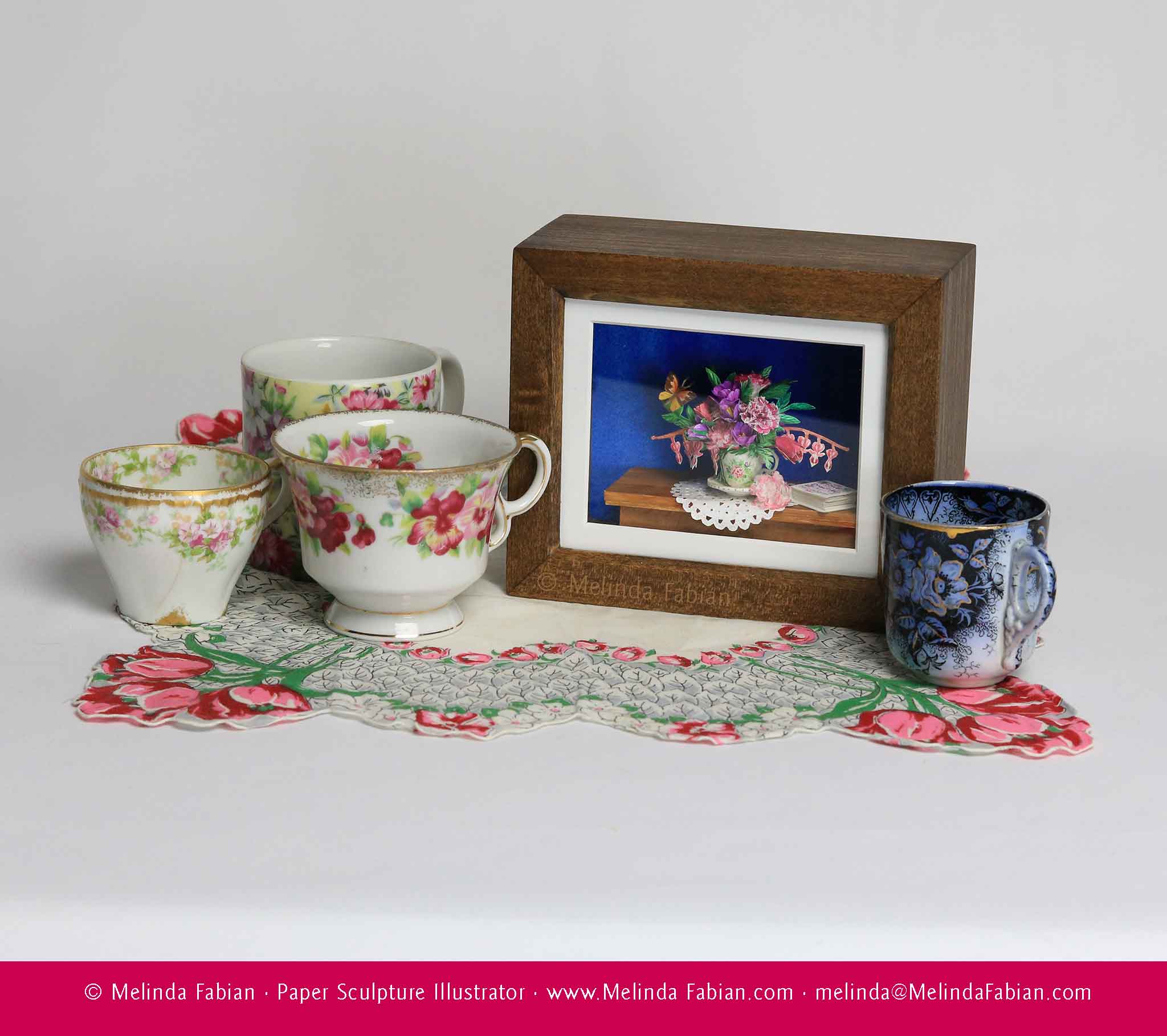Creating a Full-Color Can You Find?® Seahorse
When creating a Can You Find? hidden object picture in full color, hiding objects is similar to hiding them in a black-and-white drawing.
When creating a Can You Find? hidden object picture in full color, hiding objects is similar to hiding them in a black-and-white drawing. What shape is the object and where can I hide an object that has a similar shape? What type of texture can I add to the image to help hide a hidden object so that it all makes sense to the entire image?
Sometimes with a full-color hidden object picture, you have to keep in mind the colors of the objects will give away a clue to the viewer as to where to look for the hidden objects. The seahorse illustration is a good example of this. Looking for the color of the object — like the pink in the horseshoe or purple carrot top — can be a helpful hint in finding the hidden objects.
The hidden cat shape in the seahorse illustration often has people searching for quite some time before they are able to find it. I think the reason this object is more difficult to find is because it is hidden in negative space in the illustration. The space between the coral not on the coral itself which is why that blue space is called the negative space — the shape created from the lines of the coral.
Creating Can You Find? illustrations is always one of my favorite types of projects to do — they don’t get old even after decades of creating new puzzles in black-and-white and color. Plus it’s always a fun challenge to see what new objects I can hide next.
The Real Cat Supermodels Who Inspire My Work
Here’s just a few of the illustrations and paper sculptures where my supermodels were the inspiration. See if you can match the illustration to the cat!
Did you know that I use supermodels for some of my paper sculpture reference materials? Yes, that’s right, and I would like to show you some of the most famous models you’ll see pop up in my work right here.
First, we have Molly. An adorable calico cat who looks more like a large kitten than an adult-sized cat who is about 10 years old. She is polydactyl and has extra toes on her front paws, which just adds to her cuteness. I call her my studio cat.
She loves to come and check up on me first thing in the morning and throughout the day. She also loves to distract me and insists I stop working and let her sit on my lap while she purrs loudly. Honestly, it’s always a nice distraction for both of us. When she’s not “assisting” at my desk, she keeps me company curled up in front of the fireplace or sitting by the windows.
Next up, we have Tube Socks, the biggest orange tabby in the group of supermodels. He got his name because when he was a kitten, the stripes on his front legs looked like he was wearing tube socks — those white gym socks with the colored bands at the top. The dark orange stripes on his legs have faded somewhat with age.
We have nicknamed him a puppy cat because he follows my husband around the house. At night, Tube Socks will meow and meow, until he hears us say, “Goodnight Tube Socks!” Then he curls up and goes to sleep. How cute is that?
Next we have Peanut and Cricket, orange cats, who, along with Tube Socks, are brothers. They live with my daughter in Los Angeles, now big-time city cats in Hollywood. Cricket most recently posed for my furry cat that will be included in my installation during the Paper Works show at The Mansion at Strathmore this summer.
I often refer to our cats when I need to check out their eyes, ears, facial features or stripe patterns. They’re great live reference materials when I need to paper sculpt a cat and get their tricky features just right. Our cats make really great models. Here’s just a few of the illustrations and paper sculptures where my supermodels were the inspiration. See if you can match the illustration to the cat.
Hiding Objects in a Can You Find? Hidden Objects Illustration
Ever wonder how artists hide secret objects in their illustration work?
Ever wonder how artists hide secret objects in their illustration work? I’ve been illustrating hidden object puzzles for decades, first for Nature Friend Magazine and then with my own line of Can You Find? illustrations, which won several awards. Take a closer look at how six objects came to be hiding among this squirrel.
The first thing I do is sketch up a bunch of thumbnail sketches with my ideas so I can get the design and composition of the illustration figured out first. Sometimes as I am drawing up the illustration, I will decide that I want to hide an object in a certain area because, as in this case, I like the texture of the object and I think it will be an interesting place to hide something. I knew the acorns could make a good spot for a hidden object.
After thinking about the texture of the cap of the acorn, a turtle shell came to mind because of the texture of his shell. With the shape of the turtle shell and the acorn cap, I could draw that into a camouflaged turtle. Before I even consider doing the final art, whether it is a black-and-white line illustration or a full-color illustration, I must know exactly where the hidden objects are going to be drawn.
If I used wavy lines to indicate bark on a tree branch, I was able to use that texture on the tree branches to my advantage to easily hide a banana and a bird. The delicate, lighter-colored veins on the oak leaves became another area I wanted to hide some objects. I chose a small mitten in the lower oak leaf at the bottom of the page. I also hid a green pear on the right side of the page.
Behind-the-Scenes of Creating a Hidden Objects Illustration
I have hidden literally thousands of tiny objects in my illustrations.
I have created hundreds of hidden object pictures over the years. I used to draw a monthly hidden object illustration for Nature Friend Magazine. I also produced puzzle pages for Pockets magazine, greeting cards, jigsaw puzzles, and other children’s publications. I illustrated a line of “Invisibles Sticker Books,” which include my signature hidden object puzzles. I’ve hidden literally thousands of tiny objects in my illustrations.
But, everyone in my family has also assisted me many times with these hidden object illustrations. My husband is an expert at hidden object puzzles. He once had to find over 350 objects in my illustrations — twice — all in the same night! Yep, you read that correctly. I blame deadlines.
What happened was I was working on deadline and in order to double-check the final art, I needed to have someone look over the work with fresh eyes. After working on the illustrations for long periods of time, drawing all those lines and hiding all those objects, your eyes get a little tired. I need an assistant to help me double-check my work and make sure all the objects are hidden where they should be.
The good news is, my husband has so much Can You Find? practice, he is also now an expert at finding all the things I lose around the house. As he likes to remind me, “Living with you is like living in a giant Can You Find?” He is great at finding my phone and keys, which is perfect, because I am good at misplacing them.
When my children were young, they got in on the action too. When I was drawing monthly hidden object puzzles for Nature Friend Magazine, I would often ask them what I should draw next. Then inevitably, I would ask them what I could hide in the final illustration. After all, I couldn’t hide a banana or screwdriver in every piece. It was always refreshing to see my work through a child’s eyes. But, as it happens when kids get older, it was harder to rope them into my studio.
My Can You Find? line of illustrations were published on greeting cards, puzzles and games and won several awards. My “Invisibles” hidden object books, come in a variety of themes. Some even have stickers. They’re available for purchase through Milestone Books.
How It's Made: Can You Find?® In Black and White
Hopefully this will give you a small insight as to how I go about drawing up one of my Can You Find? illustrations.
Over the years, one of my signature projects have been hidden object games. I first did these monthly for Nature Friend Magazine as a freelance illustrator and my own full-color line of Can You Find? illustrations won several awards. But what goes in to creating a good hidden object puzzle? Here’s a little insight into the black-and-white version.
When I am illustrating a hidden object page, I am always thinking and planning out my strategy for my line work ahead of time before I even begin the final drawing. Should I use a stipple technique (tiny dots), vertical or horizontal line work, swirls shapes, thin or thick line weight? What will surround the object and how can I make the hidden object blend in with its surroundings?
There are certain areas in each illustration that are easy to see a place where an object can be hidden. The trunk of a tree and line work — all that texture — make great places to hide a paper clip, pencil, banana or, in this illustration, a clam shell.
In the mountains in the background of a landscape, depending on the object I want to hide, I will draw my line work in a specific direction to accommodate hidden objects. For instance, in the black-and-white illustration of the fox and the bunny rabbit, vertical lines were used to suggest rocks and mountains in the background. Using that line work to my advantage, I was able to hide a canoe and pliers.
The rocks in the foreground were an easy place to draw a hidden turtle. I changed the shape of the rock and added some texture to create a turtle-like shape. Or, I could have added some marks to the rock and, hidden among the dotted lines of grasses and the dirt in the ground, it can easily be turned into a slice of watermelon.
I think the more difficult place to hide an object is in the negative space of a drawing. An example of that in this illustration is the duck — hidden above the fox’s head — between his ears and among the tree branches.
I also think about the shape of an object and what shape may be similar to it when hiding an object. For instance, a daisy flower petal is long and slender, similar to a pencil, paper clip, banana or a spoon. Flower centers can become a strawberry or a blueberry.
Hopefully this will give you a small insight as to how I go about drawing up one of my Can You Find? illustrations.
Adding a Wicker Table to Make a Paper Sculpture Set
It’s no good having a wicker chair without a table, so I also need a table to go along with my “wicker” chair (all made out of paper).
It’s no good having a wicker chair without a table, so I also need a table to go along with my “wicker” chair (all made out of paper). I’ve been working on the table simultaneously with the chair for my upcoming art installation, “Charming Victorian Country Garden Retreat,” at The Mansion at Strathmore in 2020.
For both the table and chair I used a cardboard base made by gluing together many layers to build a strong solid base, using many clamps to glue it together.
I posted several videos on social media to show how I cut out hundreds of narrow strips of Strathmore paper that I needed to make the table and chair.
As you can see in this next photo taken during the weaving process on the chair, sometimes I really get into my work. It looks more confusing than it actually is in real life.
As I was designing my table and chair, I decided to incorporate some scroll work into the design. I want to give the furniture a little more elegant and Victorian flair. I went back to my good old quilling days — I started quilling as a teenager — to add some custom, white scrolls for the finishing touches.
Here are some final in progress photos as the table comes together:
Adding the Final Touches to the Wicker Chair
Then it was time to hand-cut narrow strips of white paper for hand-weaving a wicker pattern effect for the chair.
Now that I finished the cardboard structure of the wicker chair I have been working on, the second step was to paint the basic construction white. Having accomplished that, the third step was to cover the chair in plain white Strathmore paper. Once covered in white paper, the chair had a fresh canvas surface to work on. Then it was time to hand-cut narrow strips of white paper for hand-weaving a wicker pattern effect for the chair.
As I was wrapping the legs of the chair and adding woven sections, I realized I wanted to make some design changes as I approached the back of the chair, especially at the top. Originally I was going to only wrap the chair in paper, but decided to include some woven details to a portion of the back of the chair. I also wanted the top arch to be rounded instead of a flat surface.
You can see a preview of the final paper sculpture wicker chair here in the photos. The entire chair is finished and ready for the opening of The Mansion at Strathmore in Bethesda, MD!
Creating a Paper Sculpture 'Wicker' Chair Centerpiece
To bring a chair sketch to life, however, required some construction know-how.
One of the larger pieces I am making for my paper sculpture installation for The Mansion at Strathmore in Bethesda, MD, is a “wicker” chair. I researched wicker furniture extensively — I’ve always liked wicker furniture, so the research was like a shopping spree without the purchasing part.
I ended up with an image in mind of how I want the chair to look when it was finished. I also drew up a bunch of different sketches for my chair, keeping in mind the size constraints of my art installation. I need to keep things in proportion to one another. So, with my sketch in hand, and cardboard I saved for months, I was now ready to start the wicker chair.
I wanted to start with a cardboard base because a thicker paper stock can become a solid and sturdy foundation for furniture. (In my 3D design class in college, we had to make furniture out of cardboard. It was quite surprising with how sturdy layers of cardboard can become.)
Even though this chair is for decorative purposes only in the installation, I still need it to be sturdy because it will be transported to the venue and many people may have to move it around. I can’t have this paper sculpture piece being a hollow, fragile chair that falls apart before the show even begins. Plus, I want to recycle as much as possible, and I can make something beautiful out of old cardboard that would otherwise be discarded.
I started measuring the dimensions of various chairs I have around my house — dining room chairs, desk chairs, antique chairs — to come up with the correct size chair I needed to make. Once that was done, I started to cut out cardboard pieces for for the seat, which are easy and rectangular-shaped. The back of the chair with a slight arch was also easy, no problem.
Next, the chair legs, slats for the back of the chair…but wait….how do I assemble all these cardboard pieces? To bring a chair sketch to life, however, required some construction know-how.
So, I knew building little cardboard models of a variety of chair styles would help me to figure out how to complete the project. I had different objectives in mind with these models, and in the end, these funny little chairs helped me to figure out the changes I needed to make to finish constructing the chair.
What was the overall lesson I learned from all of this? Constructing something 3D often times requires another step of planning. Building a model can help you confront solvable issues quickly and on a small scale. It can be a crucial step and save countless hours when going from a pencil thumbnail sketch to a 3D object. The extra effort can save you time in the end. And now I’m making good progress on chair construction!
Creature Feature: Playful Squirrel Playing on Wisteria Vines
The squirrel is a three-dimensional paper sculpture made completely out of paper.
Wisteria vines wrapped tightly around each other, growing up a tree, around a fence, back down again to the ground, sprouting up a new shoot. Squirrels scampering over the vines. Bumble bees buzzing in the newly opened spring blossoms. A safe haven for new life in spring — butterflies, praying mantis, and tiny ants — all wanting to call the wisteria their home too.
That’s the scene I am working to capture with this squirrel perched on top of a wisteria vine, part of my upcoming art installation, “Charming Victorian Country Garden Retreat,” at The Mansion at the Strathmore in 2020. This squirrel is ready to check out what is happening below. He’s thrilled it is finally spring — and he’s ready for some new adventures.
The squirrel is a three-dimensional paper sculpture made completely out of paper. Even his tail is made out of paper. The tail is actually the easiest part of making squirrels, and it goes the fastest. It takes many, many hours to apply the paper fur to his face and body, however, which is what took the longest.
After the squirrel is shaped out of paper, he is ready for some paint. He is made out of the finest of white papers and painted in watercolor and gouache.
The wisteria flowers and leaves are also three-dimensional and are hand-cut and sculpted to form the shapes I need to create this beautiful squirrel’s spring habitat he and his other friends in the “Charming Victorian Country Garden Retreat” will also call home.
Finding Inspiration in Wisteria Flowers Blowing in the Breeze
Honoring the distant memories I find in these simple yet beautiful flowers adds more meaning and life to my paper sculptures.
Inspiration is all around us…
Gorgeous, light purple wisteria flowers blossoming in spring and early summer. Long, delicate lavender petals with a touch of white, dangling off their stems that grow like braided stalks.
One wisteria plant growing up the tall cherry tree next to the patio, creating a beautiful, peaceful, sweet-smelling sanctuary to relax in.
Another wisteria, standing on its own, growing in the side yard, reaching out and bending and twisting its vines growing in every direction, creating a picturesque backdrop for a photo shoot on a warm spring day.
Planting my favorite new wisteria at the base of the wood fence along the stream, paving the walkway with a beautiful view of lavender blossoms from the kitchen door, lining the path as you walk up to greet me at my home.
Memories often lead to the inspiration for many works of art. I know this is true about my own work. I find this is especially true with flowers. Creating an enriched, enchanted, idyllic scene like the ones I described above help me capture movement and beauty in every day moments.
Bringing those imagined memories to “life” with paper will never of course beat the beauty of mother nature, but honoring the distant memories I find in these simple yet beautiful flowers adds more meaning and life to my paper sculptures. Wisteria flowers just happen to be one of my favorites.
These wisteria flowers, crafted from paper and paint, will feature prominently in my upcoming art installation, “Charming Victorian Country Garden Retreat,” at The Mansion at Strathmore in 2020.
Welcome Home With a Beautiful Grapevine Wreath
I created this paper sculpture “grapevine” wreath using only paper and paint.
I was thinking about the different type of welcoming signs that people use around their homes. Perhaps it is a welcome mat on a doorstep or a decorative flag hanging near their house that says, “Welcome Friends.” But, one of the things I think is most common is a wreath that hangs on the door.
So many homes have wreaths — floral wreaths, themed wreaths, a different wreath for the different holidays — wreaths made out of all sorts of materials like grapevines, wood, spring flowers, summer flowers, mums for the fall, gourds, pumpkins. All signs signaling, “Welcome to Our Home.”
Thinking about wreaths also reminded me of the time my mom had a grapevine wreath with flowers on it hanging on her outside porch wall. A little bird decided to make a nest on the wreath. You could stand inside her kitchen and watch from the window as mama bird built her nest. After the eggs hatched, mama bird would make many trips throughout the day to feed her little ones. Soon the little ones were old enough to fly on their own and make a new home of their own.
I used to have a beautiful large grapevine wreath like that on the side of my house for years. It was gorgeous, with large cranberry and white mums. A little “nest” filled with plastic eggs completed the wreath.
Keeping both of those wreaths in mind, I created this paper sculpture “grapevine” wreath using only paper and paint. Peach-colored tulips, pink, red, and white peonies, leaves and ferns decorate the wreath. There is even a little nest of light blue eggs. A pretty yellow butterfly stops by for a visit.
Here’s a close-up and some photos of the finished wreath, which is framed inside a custom, hexagon wood frame.
Melinda Fabian Set as Featured Artist at Strathmore Paper Works Show
BIG news! I will be the featured artist at the upcoming Paper Works art show at The Mansion at Strathmore this summer, where I will exhibit an 18-foot paper sculpture titled, “Charming Victorian Country Garden Retreat.”
BIG news! I will be the featured artist at the upcoming Paper Works art show at The Mansion at Strathmore this fall, where I will exhibit an 18-foot paper sculpture titled, “Charming Victorian Country Garden Retreat.”
Created out of paper and paint, it is my hope this full-scale paper sculpture experience will remind us of the importance of creating real spaces in our lives that can be our safe haven — places that are meaningful, relaxing, rejuvenating and enjoyable. Here are just some of the surprises you can expect to find in this “Charming Victorian Country Garden Retreat”:
Visitors are welcomed into the serene retreat with beautiful garden, framed by exquisite, life-like hanging purple wisteria flowers while squirrels scamper over the vines. Tulips, peonies and iris flowers line the front porch of a Victorian country home, providing a retreat for birds and butterflies too. The wicker table and chair on the front porch overlook the rose gardens while the family dog and kittens play nearby.
You can also count the ladybugs and look for hidden creatures, such as a chipmunk, praying mantis, bees and a leaf hopper. This paper habitat can just about come alive with just a little imagination. Close your eyes for a moment and you can almost smell the flowers, hear the birds chirping and feel the sunshine on your face. By the time you’ve had a good look around, I hope you’ll realize just how life-like paper sculpture can be.
I've already been hard at work for months bringing to life a realistic paper sculpture like you've never seen before, and I can't wait for you to see the completed piece. In the meantime, you can follow the journey on my blog and social media accounts and subscribe to my newsletter to be the first to get new updates!
The show will run at The Mansion at Strathmore in Bethesda, Maryland, from Sept. 8 through Oct. 30, 2020. More details to be announced soon!
Updated Aug. 5, 2020.
Paper Sculpting 'Dancing' Bleeding Hearts
One of my favorite flowers that you will see in many of my pieces are bleeding hearts.
One of my favorite flowers that you will see in many of my pieces are bleeding hearts. I have many reference photos of these beautiful pink heart-shaped flowers. Every spring when they start to bloom, I feel compelled to snap more photos of the beautiful, pink, bleeding hearts.
Because of the natural way these plants grow and the way the stem gently bends in an arc shape, makes it easy to use the flowers in a variety of compositions.
In my paper sculpture design “Crossing My Hearts,” I wanted the illustration to be a flat 2D painting and then have the flowers flow gently out of the paper into a three-dimensional painting. When you first look at the picture, it appears to be a two-dimensional piece, but then are surprised when you realize that the flowers are coming out of the background into the foreground.
I wanted to add a touch of humor to this piece, so I added the ants to look as though they are marching along, one after another, like ants do, all along the stem of the flower. Maybe they are getting ready to dance and do the mamba.
Creating Custom Paper Sculpture Letters as One-of-a-Kind Keepsakes
When I was designing the letters, I intentionally made them so that each one could be used individually, framed and sold separately to display on a shelf or to hang on a wall.
This Letter ‘E’ and the letter ‘R’ were both originally designed as a part of my logo that spells out the word “PAPER.”
But, when I was designing the letters, I intentionally made them so that each one could be used individually, framed and sold separately to display on a shelf or to hang on a wall.
The letter ‘E’ is made up of a colorful array of flowers with a butterfly and a little bee on it. It is a beautiful way to highlight one of your initials. To make up this Letter ‘E,’ I individually cut by hand each little flower.
After the flower is cut out, I then paint it in watercolor and gouache. This letter ‘E’ contains over 50 hand-cut and hand-painted flowers. Each petal is individually cut by hand, glued together to form the flower and then painted. The butterfly is “flying” just above the flowers, looking like it is about to land. The little bee in the bottom left hand corner is very busy checking out the gorgeous pink gerbera daisy.
For the letter ‘R,’ I wanted to highlight a bird in honor of a close friend of mine who enjoys taking bird photos. No matter where he goes he manages to find a bird to photograph — even when no one else can even see any wildlife in the vicinity, he will find one!
For this letter, I chose a blue heron, since they are also a very popular bird in my home state of Maryland. Here is just one of my friend’s many reference photos he generously let me use to make this tall, statuesque bird.
This letter ‘R’ was a little trickier to make than the flowery letter ‘E.’ Flowers can pretty easily transform into any of the letters of the alphabet. On the other hand, the blue heron and the tree shape had to conform to the shape of the letter ‘R.’ I added a couple of other birds in the tree and a cute little box turtle is sitting at the base of the tree on the left-hand side.
This three-dimensional letter is all made out of paper. I included a behind-the-scenes photo of the hand-drawn letters and you can also see the blue heron, all in white, before he got painted in watercolor and gouache.
Both letters are framed inside a custom wood shadowbox frame. The frame measures 10.75” L x 9” W x 2.5” D. Please contact Melinda Fabian if you would like to purchase either of the framed letters.
You can also custom order a personalized letter, which can include items that are important to you or your loved one, if you’d like to give it as a gift. Send me an email at melinda@MelindaFabian.com to discuss your custom letter initial.
Turning a Cat Nap Into a Work of Art
When you see a sweet little cat nap, don’t you wish it could be you, sleeping peacefully at 2 in the afternoon?
When you see a sweet little cat nap, don’t you wish it could be you, sleeping peacefully at 2 in the afternoon? Life of a house cat. The only thing he has to worry about is, “When can I take another nap?” and “When is supper time?”
Those were a few of the things I was thinking about when I was painting this orange tabby cat sleeping peacefully in his favorite, blue-stuffed chair, not a care in the world!
This sleepy tabby is a flat, two-dimensional watercolor and gouache painting with a few three-dimensional elements added to the picture. His furry ear is popping out of the paper, and his whiskers and a few bits of fur here and there gives him some added 3D effect.
Identifying an Artist's Signature Style: 'Bunny and Butterflies in My Garden'
When you look at an artists’ work, you can often get a sense of not only their style, but also their color palette, the subjects they enjoy painting…
When you look at an artists’ work, you can often get a sense of not only their style, but also their color palette, the subjects they enjoy painting – such as landscape painters, floral artists, animals, etc. You may also notice similar items in many of their paintings. If you look through my art and illustration work that I’ve done over the past 35 years, including my published illustration books and editorial work, you will also notice a trend.
Like many artists, I tend to paint and illustrate things that I am familiar with and that are of interest to me. My work is almost always nature-related and is very colorful. An example of some of my favorite things to illustrate can be found by looking at the paper sculpture illustration, “Bunny in My Garden.“
The first thing you may notice about this 3D paper sculpture illustration is that it is quite colorful. It is a good example of my color palette, which includes pinks, purples, magentas, coral and blues. The next thing you probably will notice is the bunny rabbit.
Instead of painting a typical brown wild bunny, I wanted to depict one of the pet rabbits my daughter had when she was growing up. It is no coincidence that this bunny is sitting in the flower garden. You may think this is where she would run off to when not in her hutch, but that is not it at all. I will often include a little secret or a hidden play on words in my paintings (that only my family members would catch onto) and this is actually a small play on words.
Our family bunny never ran into the flower garden. The bunny’s name was Flower. So of course she needs to sit among these beautiful colorful flowers. (Although I must admit I had imagined that if she did get into the flowers, she would have eaten them all.) The other thing about Flower is that she was the cutest little dwarf bunny rabbit — soft bright white with dark black spots — just like in the illustration.
At the top of the oval picture are one of my favorite flowers, the bleeding hearts. I really like the shape of the flower and the plant and I like drawing them and paper sculpting them as well. The pink heart-shaped flowers curve nicely on the stem, which I can use to my advantage to help to create a frame around the subject, as I did in this painting. I used the curved flower stem to bring your eye back to the cute little bunny rabbit.
I’ve also loved seeing and watching butterflies since I was a little girl and have many reference books, photographs and books about butterflies. This spring I even had the opportunity to visit the butterfly pavilion in Los Angeles at the Natural History Museum. I will often include butterflies in my work and the ones in this picture are three dimensional and pop out of the paper instead of being just a flat painting.
The last thing I want to point out about this “Bunny and Butterflies in My Garden” design is that if you look closely, you will notice a little ant “hiding” in the leaves of the flower garden. I’ve drawn hundreds of hidden object pictures over the years and will often have little things hiding out in the background of my work, waiting to be found.
If you have the time, I hope you will take a look through my portfolio to see if you can notice any other similarities in my work. Can you find other illustrations with bleeding hearts, bunny rabbits, ants and flowers? I hope I have also encouraged you to look through other artists portfolios and gallery work to see if you can discover their color palette and the similarities they may have in their work.
Celebrating Fall With a Trio of Paper-Sculpted Gourds
This trio of gourds was a fun project to do. I wanted them to look as realistic as possible.
Sometimes I like the challenge of creating something as realistically as I possibly can out of paper. While visiting a local farm, I discovered so many interesting gourds in all different sizes and shapes. Of course I thought — that’s it! A great idea for a photo-realistic paper sculpture.
After purchasing many different varieties of gourds in all different shapes, sizes and colors, I had to narrow it down and decide which one I would try to mimic out of paper and paint. These are the three gourds I chose. I also decided to make them quite a bit smaller than the real-life gourds.
My favorite part of this design was adding the texture to the gourds — all those knobby lumps and bumps. I then painted the gourd after it was all shaped and formed to mimic the color of the ones I bought at the farm.
The paper sculpture that was the most challenging to make was the smoothest-looking gourd of the three. That surprised me as I thought it would be a breeze to make that one: Just glue down some paper, add some paint and it is done. But for some reason, it took some trial and error and many re-dos to get the smooth surface of the gourd correct. It kept getting lumpy and the seam where the two ends of the paper met kept showing up in an obvious way in all the wrong places. The trick is to hide your seams when you paper sculpt so that is doesn’t give your “secret” away that it is just made out of paper.
This trio of gourds was a fun project to do and I especially like hearing people be so surprised to discover they are paper gourds and not real gourds. The photos show the real gourd next to the paper gourds, which are completely three-dimensional and made entirely out of paper that I painted to give them a realistic look.
Why Norman Rockwell Is a Major Influence on My Artwork Goals
Norman Rockwell is just one of many illustrators that has influenced the type of art that I want to create.
One of the many things that I like about Norman Rockwell’s work is the subject matter. He depicted images of children playing — happy, pleasant scenes that often used humor within the illustrations to create images of an idyllic childhood.
Even though these scenes were most likely not what most people experienced growing up, it was certainly what people wished it was like or hoped it could be like. His illustrations make me feel happy and I imagine that his illustrations brought happiness to many people, even if only for a few minutes.
Of course I also like the character he was able to bring out in his models and the expressions on their faces. He was a master illustrator and had the ability to bring life into the characters he painted in his artwork.
Influenced by Norman Rockwell, I hope to be able to bring joy to people when they are viewing my art. My hope is that it will make them feel happy and hopefully make them smile. I like when someone looks at my paper sculptures and wonders, “How did she make that?” It creates a sense of fun.
Whether I am working on another Can You Find? hidden object puzzle or another paper sculpture illustration, one of my goals for my art is to make people happy and to create art that even your grandmother can view. Norman Rockwell is just one of many illustrators that has influenced the type of art that I want to create.
Finding Inspiration In the Graphic Art of M.C. Escher
How my beautiful 3D paper sculpture illustration of a peacock was inspired by the work of artist M.C. Escher.
One of the famous graphic artists I like is M.C. Escher. He is famous for his interesting lithographs and his use of tessellations in his art work. When I was first introduced to his art it reminded me of a puzzle. At first glance when you look at one of Escher’s pieces it looks almost “normal” but with closer observation, you realize what he drew is actually impossible, such as his work “Waterfall” or “Relativity.”
I like the humorous interactive elements in his drawings such as in “Reptiles” and “Drawing Hands.” These two have influenced my work. When I first began thinking about how I was going to seamlessly combine watercolor paint and paper sculpture, those two lithographs of Escher’s were something I thought about. His work is a flat lithograph but they look three-dimensional. In “Reptiles,” the creatures appear to actually walk right out of the paper. In “Drawing Hands,” the hands appear to come alive but are actually just a flat two-dimensional piece.
I like creating that play between a two-dimensional surface and how it will gradually grow into a three-dimensional surface. An example of this in my work is the paper sculpture illustration titled, “Peacock.”
This beautiful peacock is a flat painting in some areas, and then is gradually transformed into a 3D piece. My hope is that when viewing this paper sculpture illustration at a distance, it appears to be a flat painting. But then as you move in closer, those colorful peacock feathers are really 3D and coming right out of the paper!
M.C. Escher is just one of many artists that have influenced my work. Whether you’re an artist or not, we’re all touched by beautiful design — it could be hanging in a gallery, the printing on your favorite T-shirt or something you see online.
What artists have influenced your work? Let us know in the comments below!
Artwork Feature: Delicate 'Teacup in Spring' Ready for Tea Time
“Teacup in Spring” is framed in a hand-made, custom wood frame and the image is only 3.75” x 2.75” x 1.25” deep.
I love beautiful flowers in pinks and purples, butterflies and antique teacups. Influenced by botanical art, beautiful decorative floral wall art, and the Dutch floral artists of the 17th century, I felt inspired to combine all of my favorite elements into one 3D paper sculpture, titled “Teacup in Spring.”
I like the shapes of antique china teacups, which are typically decorated in delicate floral motifs. I am drawn to the intricate shapes of the teacups and the flowers on the hand-painted teacups. I liked the idea of combining the teacup with a flower bouquet and of course, there had to be a butterfly that just happened to be visiting this spring bouquet.
The entire paper sculpture design is all created out of paper and paint. I took a photo of “Teacup in Spring” next to some antique teacups for size comparison. “Teacup in Spring” is framed in a hand-made, custom wood frame and the image is only 3.75” x 2.75” x 1.25” deep.




